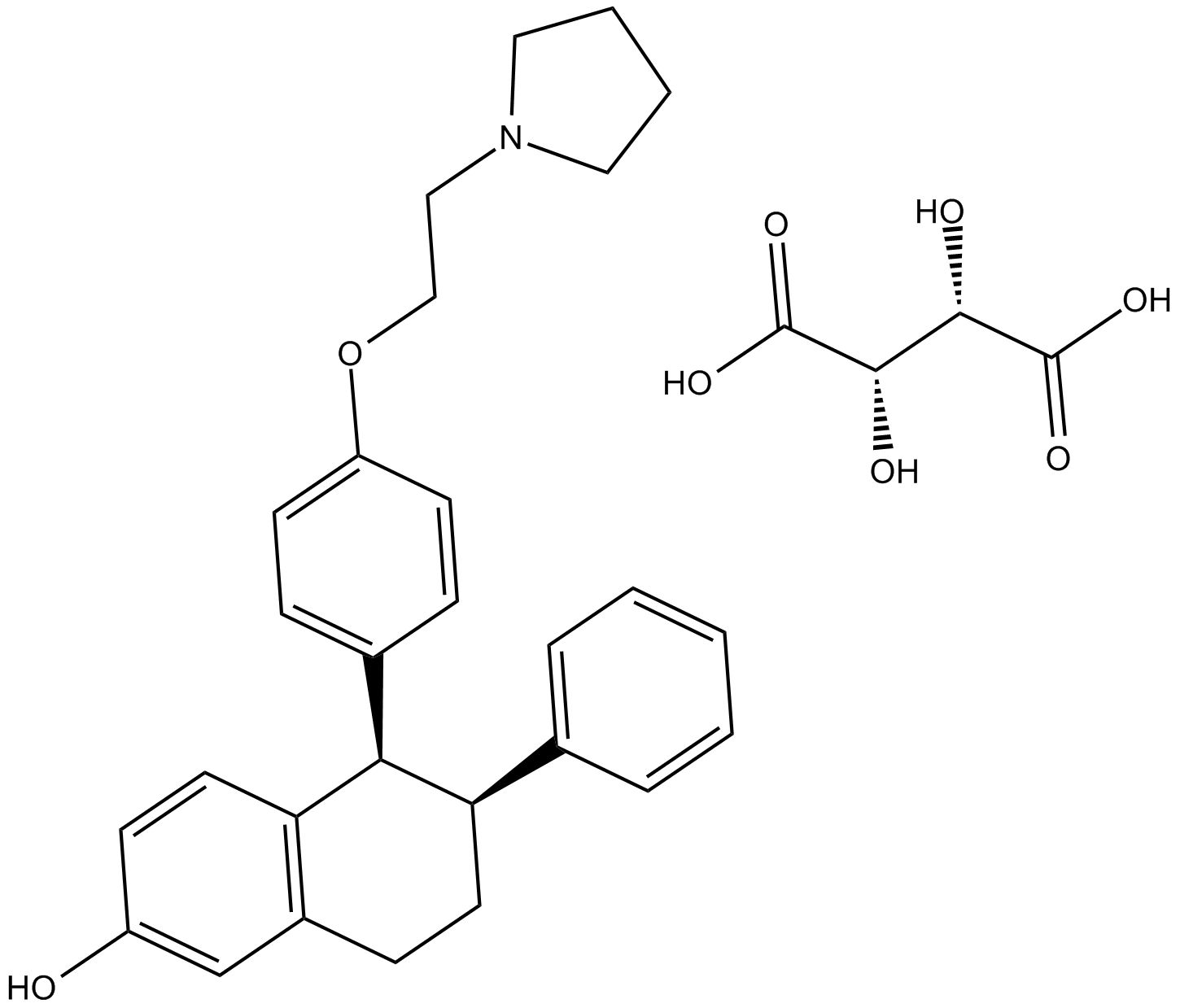Estrogen Receptor/ERR
Estrogen receptors are a group of proteins found inside cells. They are receptors that are activated by the hormone estrogen (17β-estradiol). Two classes of estrogen receptor exist: ER, which is a member of the nuclear hormone family of intracellular receptors, and GPER (GPR30), which is a member of the rhodopsin-like family of G protein-coupled receptors. The ER's helix 12 domain plays a crucial role in determining interactions with coactivators and corepressors and, therefore, the respective agonist or antagonist effect of the ligand. Different ligands may differ in their affinity for alpha and beta isoforms of the estrogen receptor: estradiol binds equally well to both receptors, estrone, and raloxifene bind preferentially to the alpha receptor, estriol, and genistein to the beta receptor. Estrogen and its receptors are essential for sexual development and reproductive function, but also play a role in other tissues such as bone. Estrogen receptors are also involved in pathological processes including breast cancer, endometrial cancer, and osteoporosis. Alternative promoter usage and alternative splicing result in dozens of transcript variants, but the full-length nature of many of these variants has not been determined.
Targets for Estrogen Receptor/ERR
Products for Estrogen Receptor/ERR
- Cat.No. Product Name Information
-
GC11282
β-Estradiol
Sex hormone
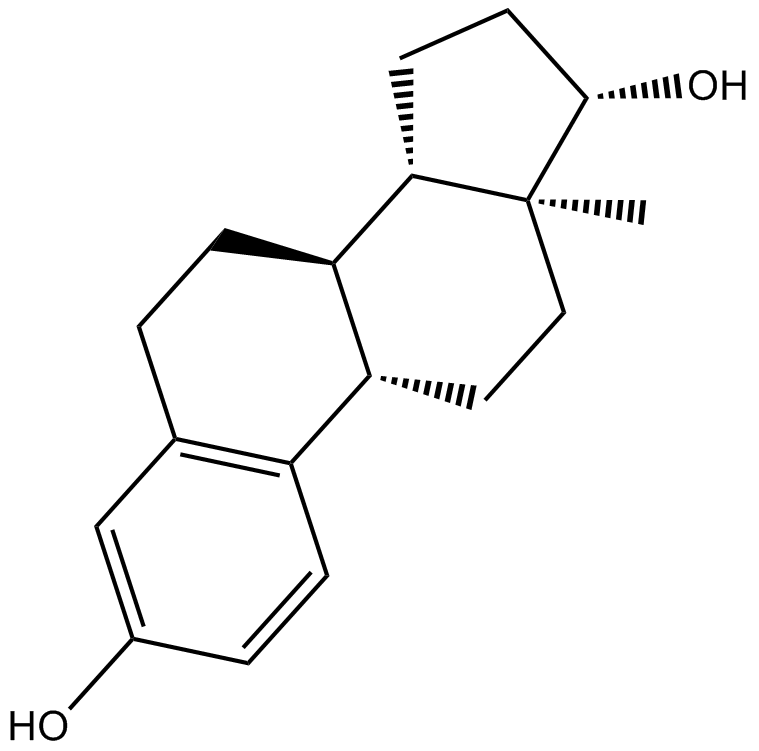
-
GC40753
α-Zearalanol
α-Zearalenol (α-zol) is a Mycotoxin with high affinity for the estrogen receptors (ER).

-
GC38008
β-Zearalenol
A hepatic metabolite of zearalenone
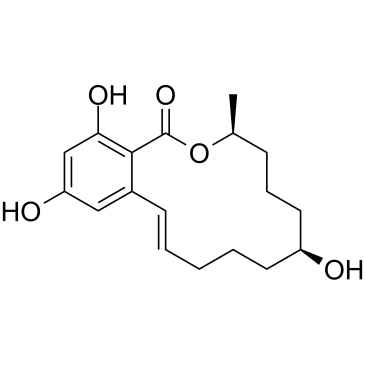
-
GC45968
(±)-Liquiritigenin
A flavonoid with anticancer activity

-
GC34962
(±)-Medicarpin
(±)-Medicarpin, a pterocarpan, is a type of isoflavonoid isolated from several medicinal plant species with various biological effects, including Sophora japonica, Zollernia paraensis and Platymiscium yucatamun, Machaerium aristulatum, Platymiscium floribundum, and so on. (±)-Medicarpin potently inhibits osteoclastogenesis and promotes bone healing and increases bone mass by osteoblast differentiation with estrogen receptor (ER) β-mediated osteogenic action.
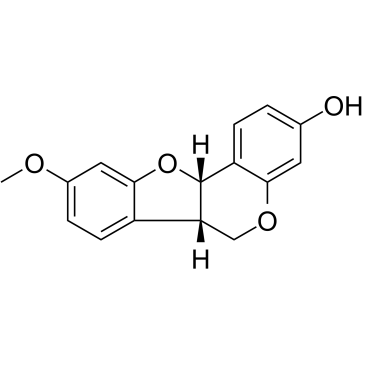
-
GC65885
(1S,3R)-GNE-502
(1S,3R)-GNE-502 (compound 179) is a potent ERα degrader with an EC50 value of 13 nM against ERα in MCF7 HCS. (1S,3R)-GNE-502 can be used to research cancer related with estrogen receptor.
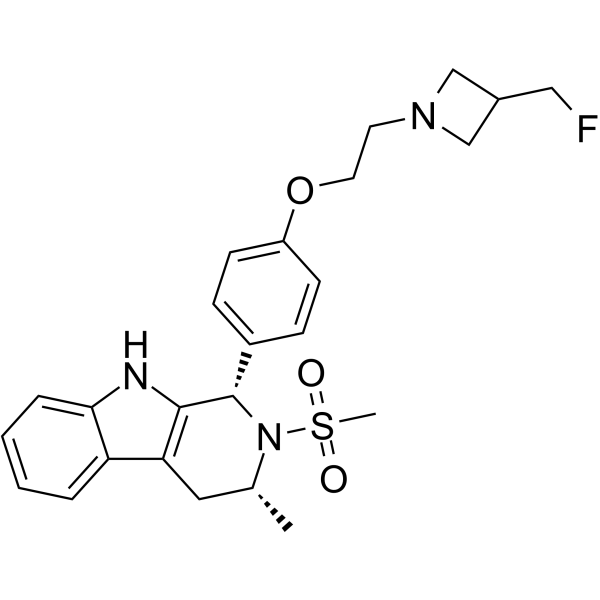
-
GC34965
(20S)-Protopanaxatriol
An active ginsenoside metabolite
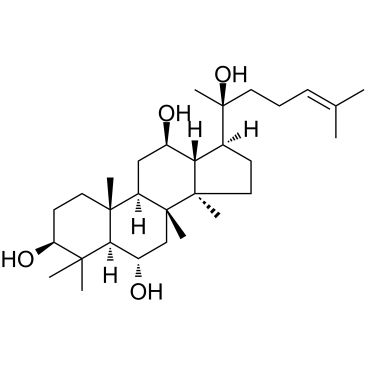
-
GC34978
(E)-4-Hydroxytamoxifen
(E)-4-Hydroxytamoxifen ((E)-Afimoxifene), the less active isomer of (Z)-4-hydroxytamoxifen, is an estrogen receptor modulator.
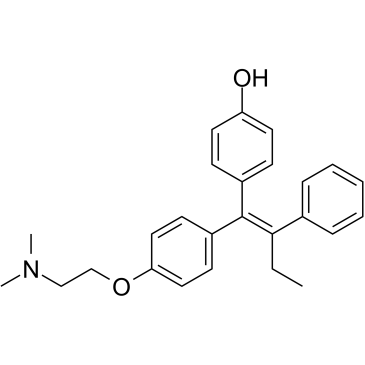
-
GC39747
(E/Z)-GSK5182
(E/Z)-GSK5182 is a racemic compound of (E)-GSK5182 and (Z)-GSK5182 isomers.
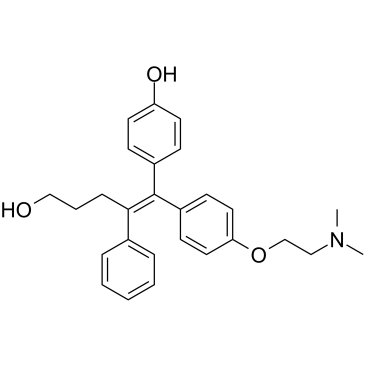
-
GC40643
(R)-Equol
Equol is a non-steroidal estrogen produced from the metabolism of the isoflavonoid phytoestrogen daidzein by human intestinal microflora.

-
GC61488
(Rac)-Acolbifene
(Rac)-Acolbifene (EM-343; (Rac)-EM-652) is the racemic form of EM652 (estrogen receptor?antagonist), has anti-estrogenic and estrogenic activities. (Rac)-Acolbifene (EM-343; (Rac)-EM-652) contains a piperidine ring, shows good pharmacological profile,relative binding affinity (RBA)=380.
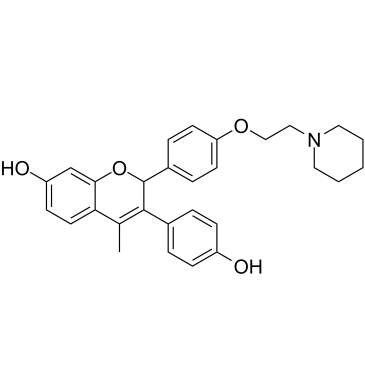
-
GC38542
10β,17β-dihydroxyestra-1,4-dien-3-one
10β,17β-dihydroxyestra-1,4-dien-3-one (DHED) is a brain-targeting bioprecursor prodrug of the main human estrogen, 17β-estradiol, alleviates hot flushes in rat models of thermoregulatory dysfunction of the brain.
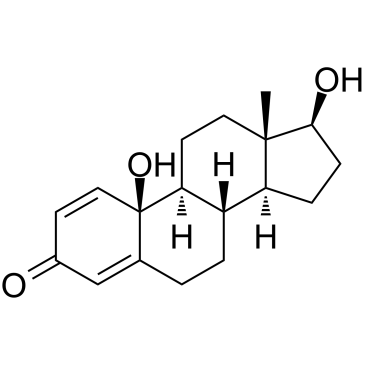
-
GC13887
25(R)-27-hydroxy Cholesterol
25(R)-27-hydroxy Cholesterol is a selective estrogen receptor modulator and an agonist of the liver X receptor.
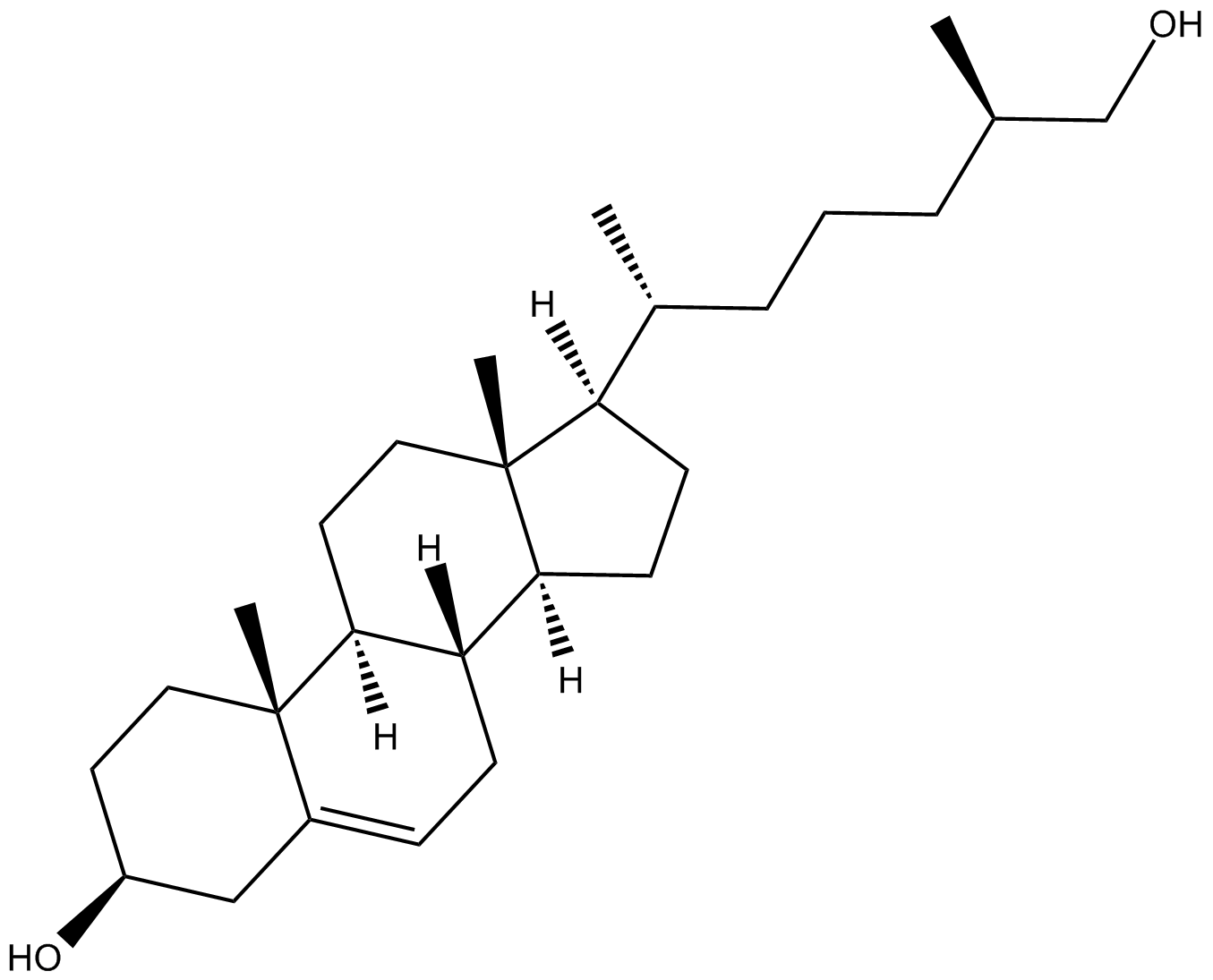
-
GC68533
3'-Hydroxymirificin
3'-Hydroxymirificin (compound 3) is a natural product that can be obtained from the roots of Pueraria lobata. It has estrogenic and anti-proliferative activity against MCF-7 human breast cancer cells.
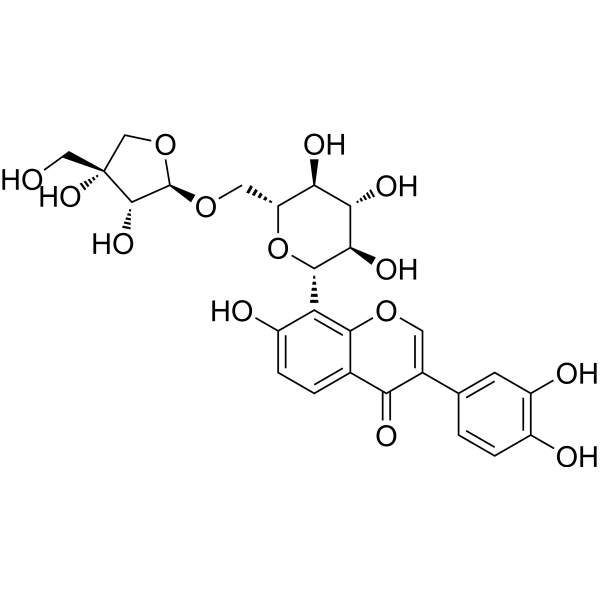
-
GC17803
4-Hydroxytamoxifen
4-Hydroxytamoxifen (Afimoxifene) is a racemic compound of (Z)-4-Hydroxytamoxifen and (E)-4-Hydroxytamoxifen isomers. 4-Hydroxytamoxifen is an estrogen receptor modulator.
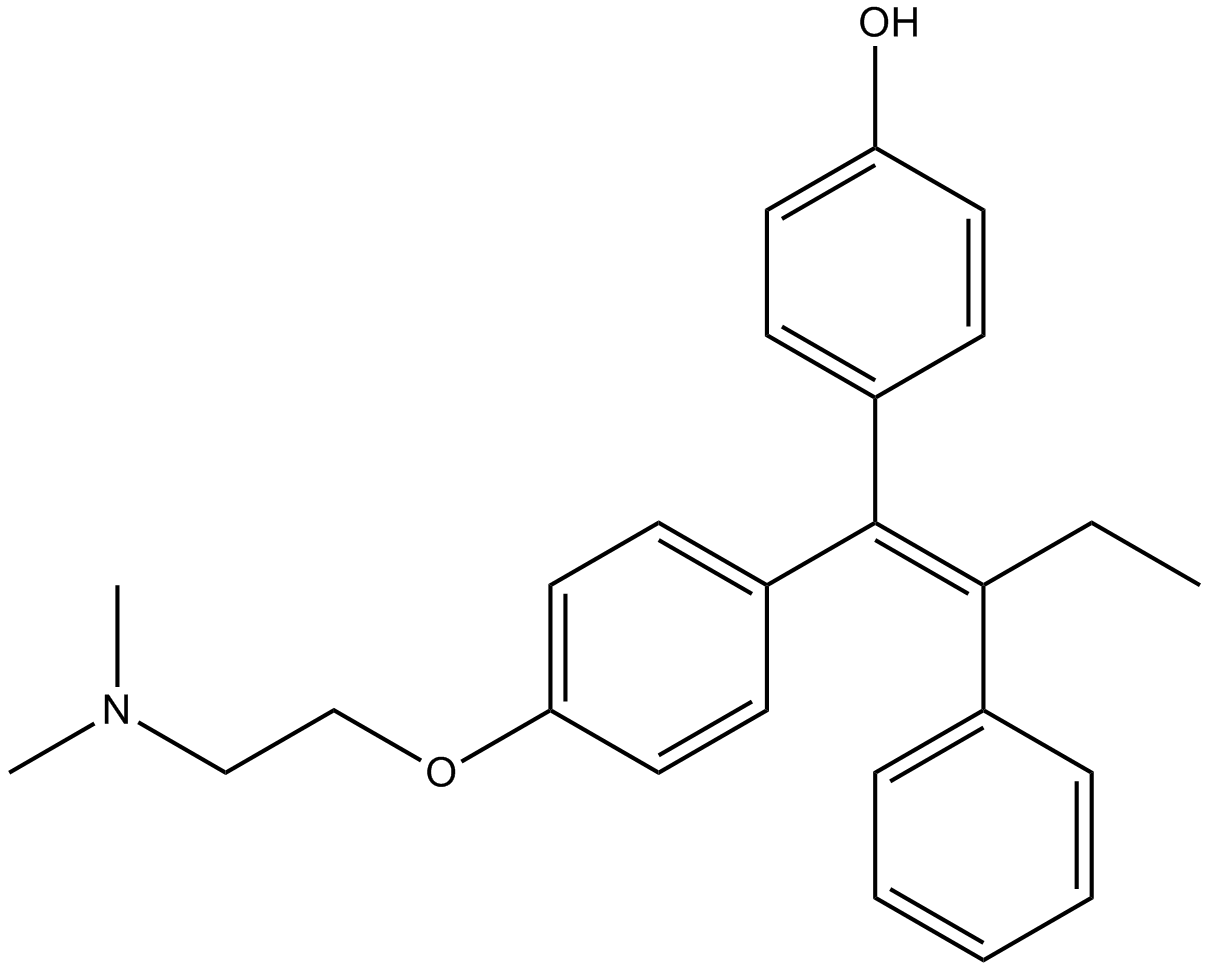
-
GC18362
Acolbifene
Acolbifene is a selective estrogen receptor modulator (SERM).
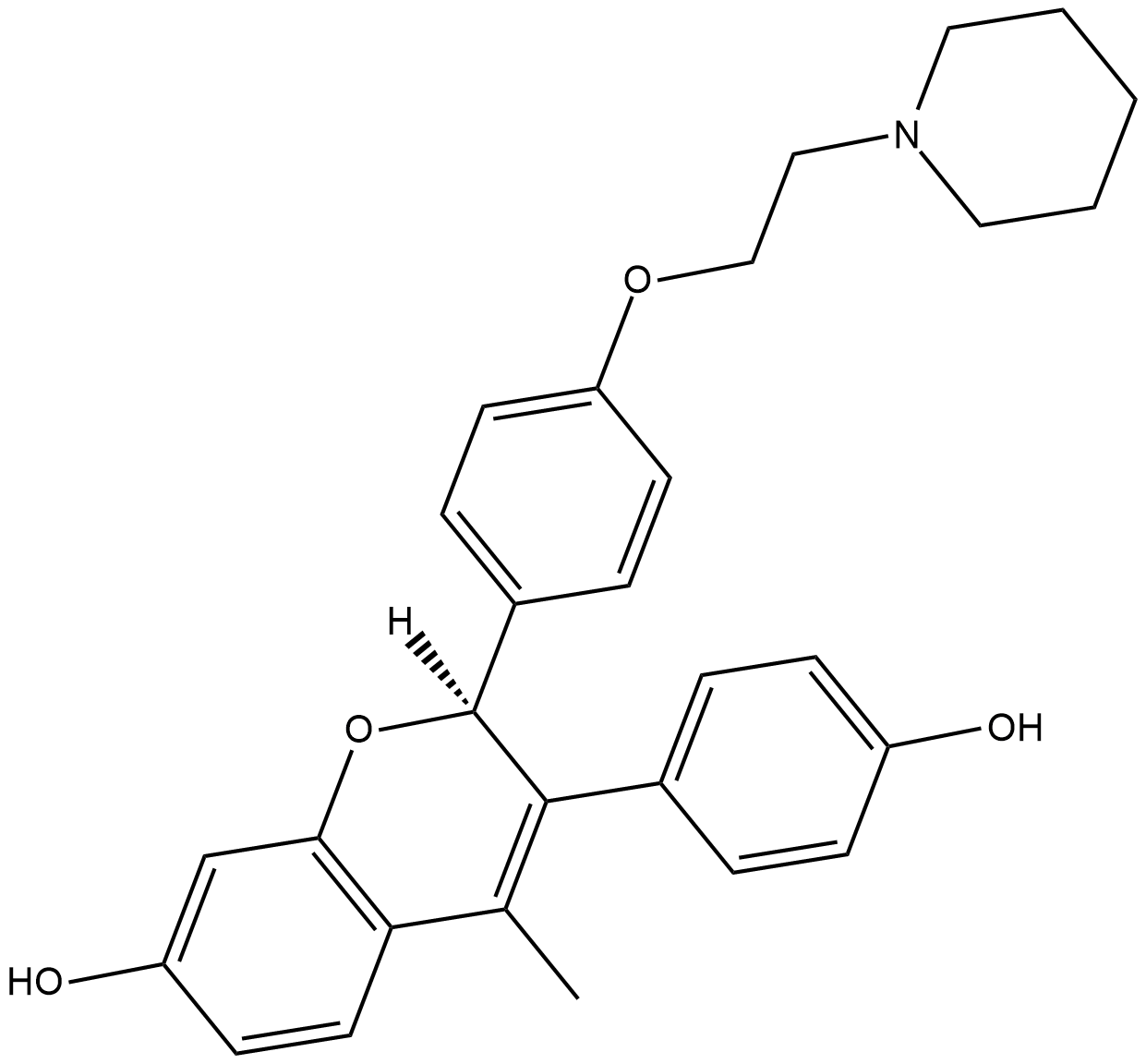
-
GC61514
Acolbifene hydrochloride
Acolbifene (EM-652) hydrochloride, an active metabolite of EM800, is an orally active, cancer-preventing selective estrogen receptor modulator (SERM). Acolbifene (EM-652) hydrochloride inhibits estradiol (E2)-induced transcriptional activity of ERα (IC50=2 nM) and ERβ (IC50=0.4 nM). Acolbifene (EM-652) hydrochloride exerts a potent and pure antiestrogenic action in the mammary gland and uterus. Anticarcinogenic properties.
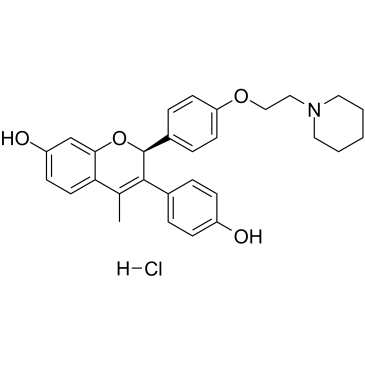
-
GC62723
ARV-471
ARV-471 is an oral estrogen receptor PROTAC protein degrader for breast cancer. ARV-471 is a hetero-bifunctional molecule that facilitates the interactions between estrogen receptor alpha and an intracellular E3 ligase complex. ARV-471 leads to the ubiquitylation and subsequent degradation of estrogen receptors via the proteasome. ARV-471 robustly degrades ER in ER-positive breast cancer cell lines with a half-maximal degradation concentration (DC50) of ~2 nM.
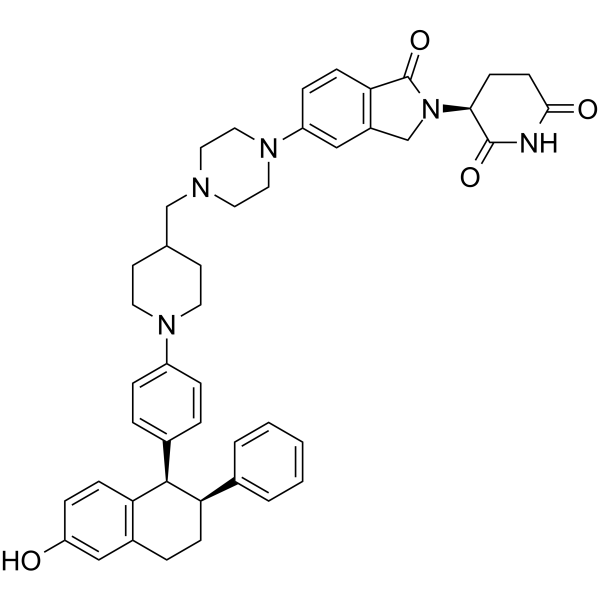
-
GC33381
Arzoxifene hydrochloride (LY 353381 HCl)
Arzoxifene (LY353381) hydrocloride is a selective estrogen receptor modulator that is a potent estrogen antagonist in mammary and uterine tissue while acting as an estrogen agonist to maintain bone density and lower serum cholesterol.
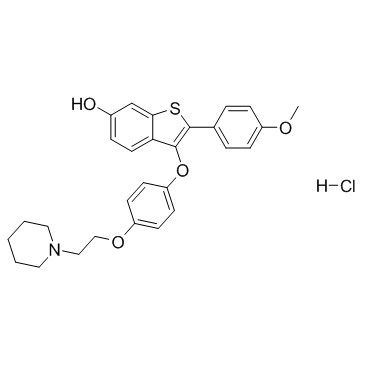
-
GC14405
AZD9496
estrogen receptor inhibitor, orally active
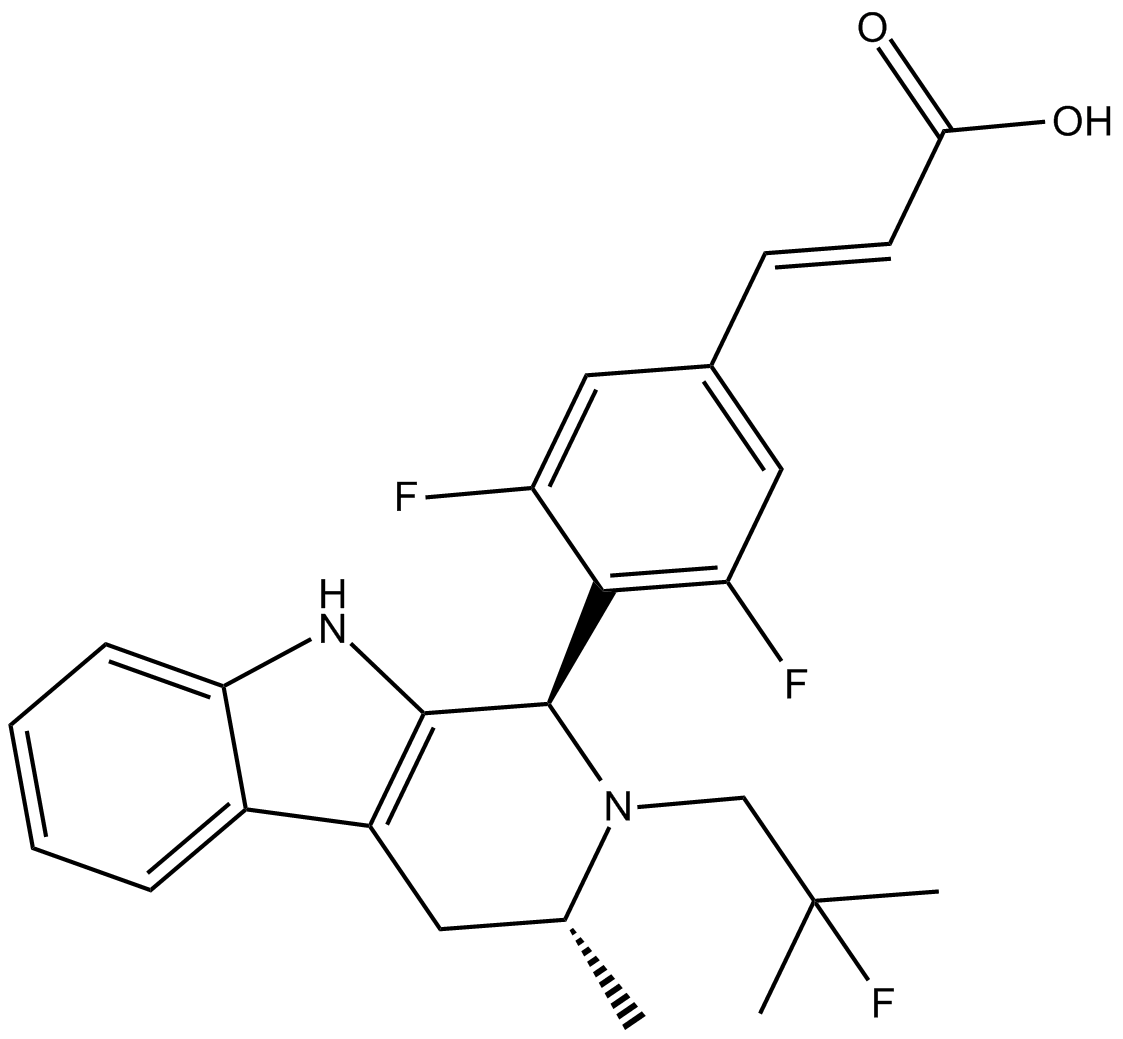
-
GC35450
AZD9496 maleate
AZD9496 maleate is a potent and selective estrogen receptor (ERα) antagonist with IC50 of 0.28 nM. AZD9496 maleate is an orally bioavailable selective oestrogen receptor degrader (SERD).
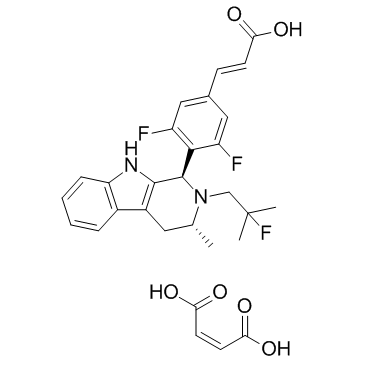
-
GC17588
Bavachin
estrogen receptors ERα and ERβ activator
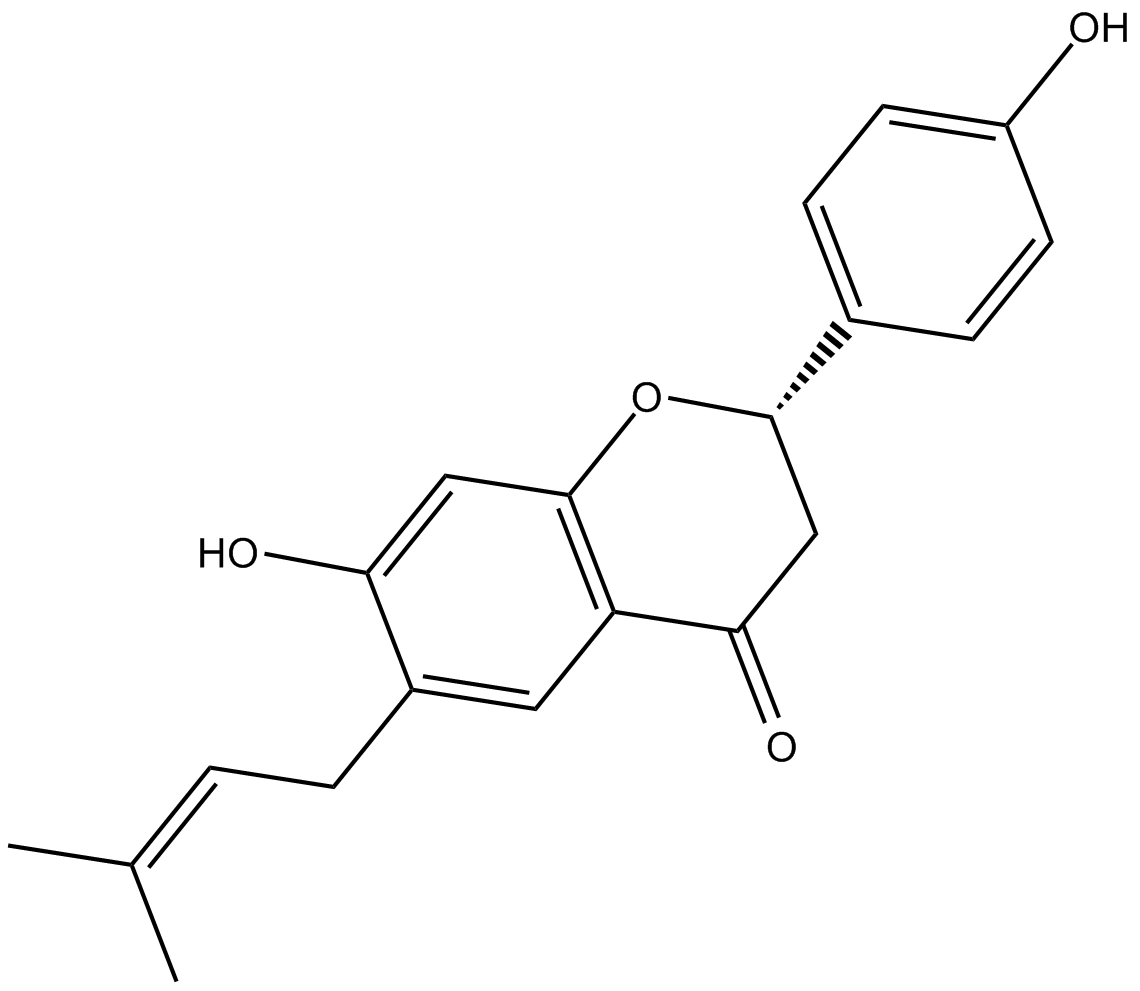
-
GC14883
Bazedoxifene
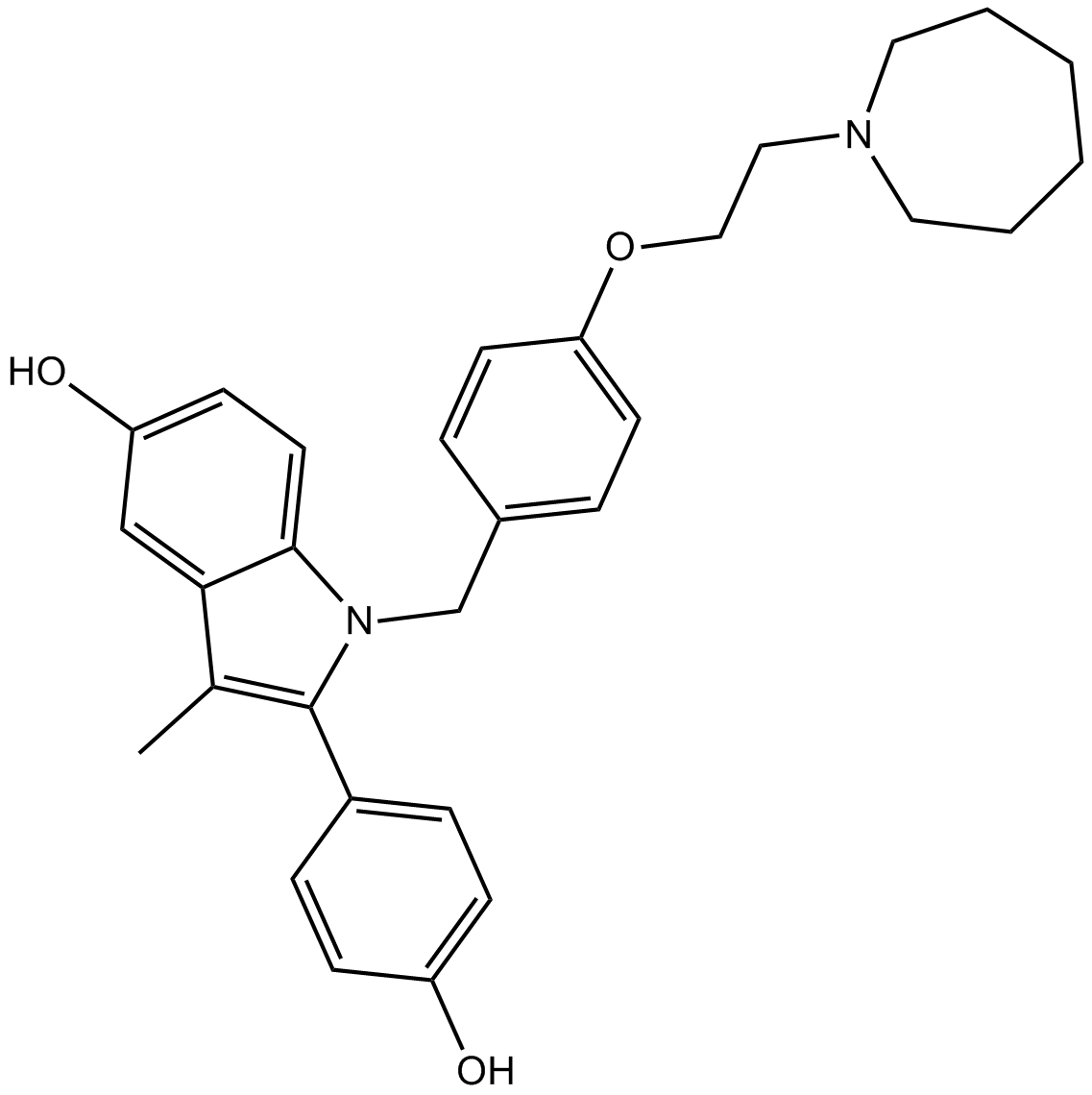
-
GC10852
Bazedoxifene acetate
A selective estrogen receptor modulator
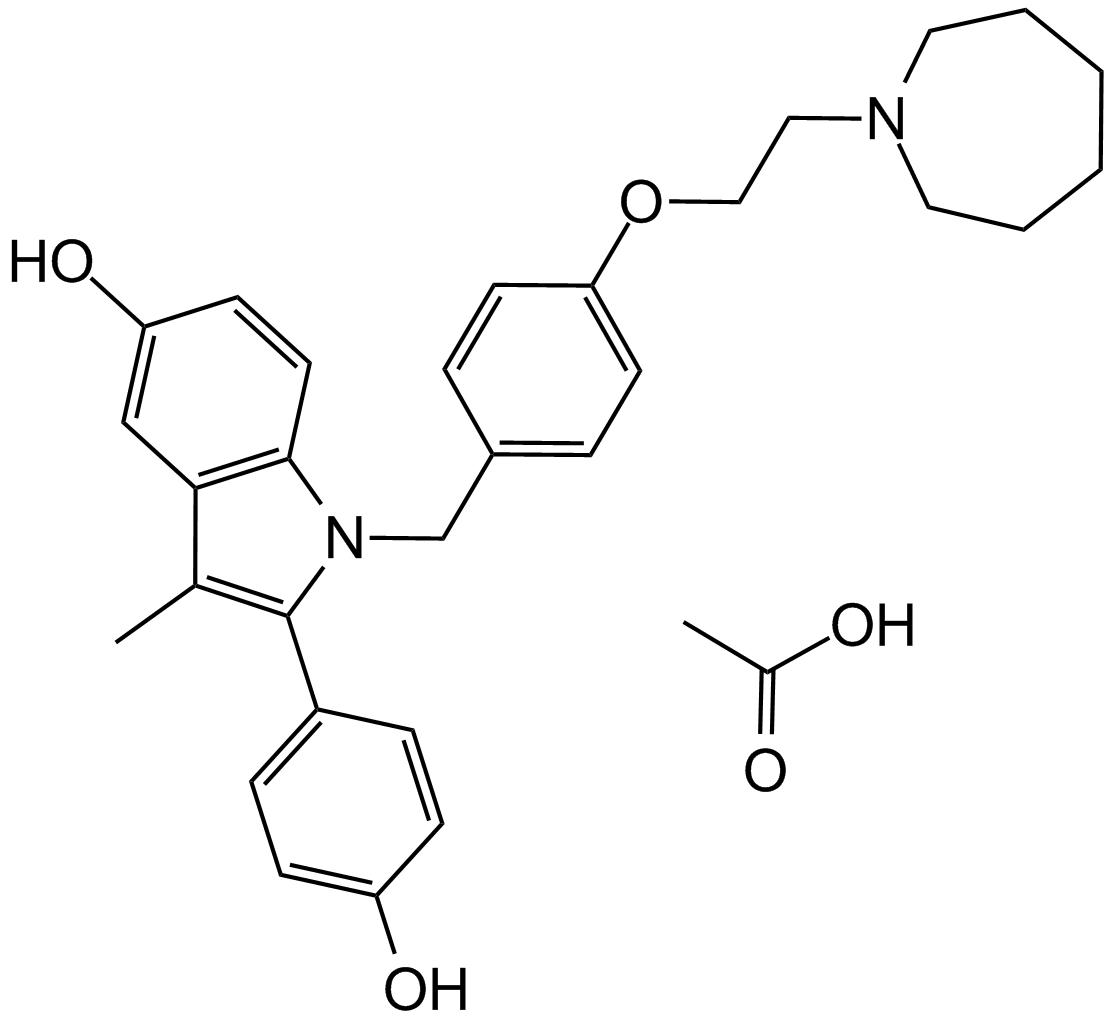
-
GC33011
BHPI
An ERα antagonist
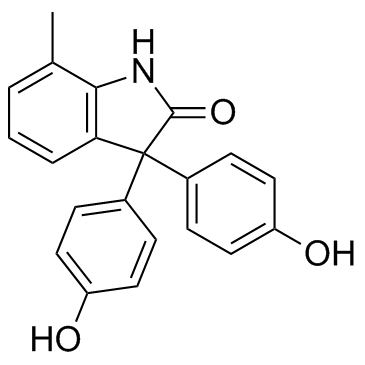
-
GC32782
Brilanestrant (ARN-810)
Brilanestrant (ARN-810) (ARN-810; GDC-0810) is an orally bioavailable selective estrogen receptor degrader (SERD) with IC50 of 0.7 nM.
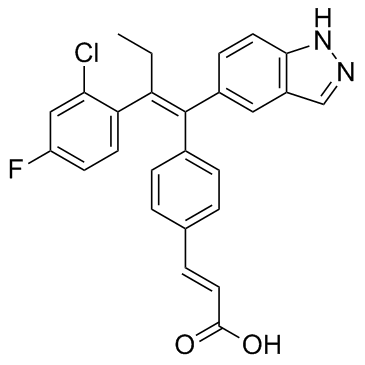
-
GC17398
Cholesterol
Major sterol in mammals
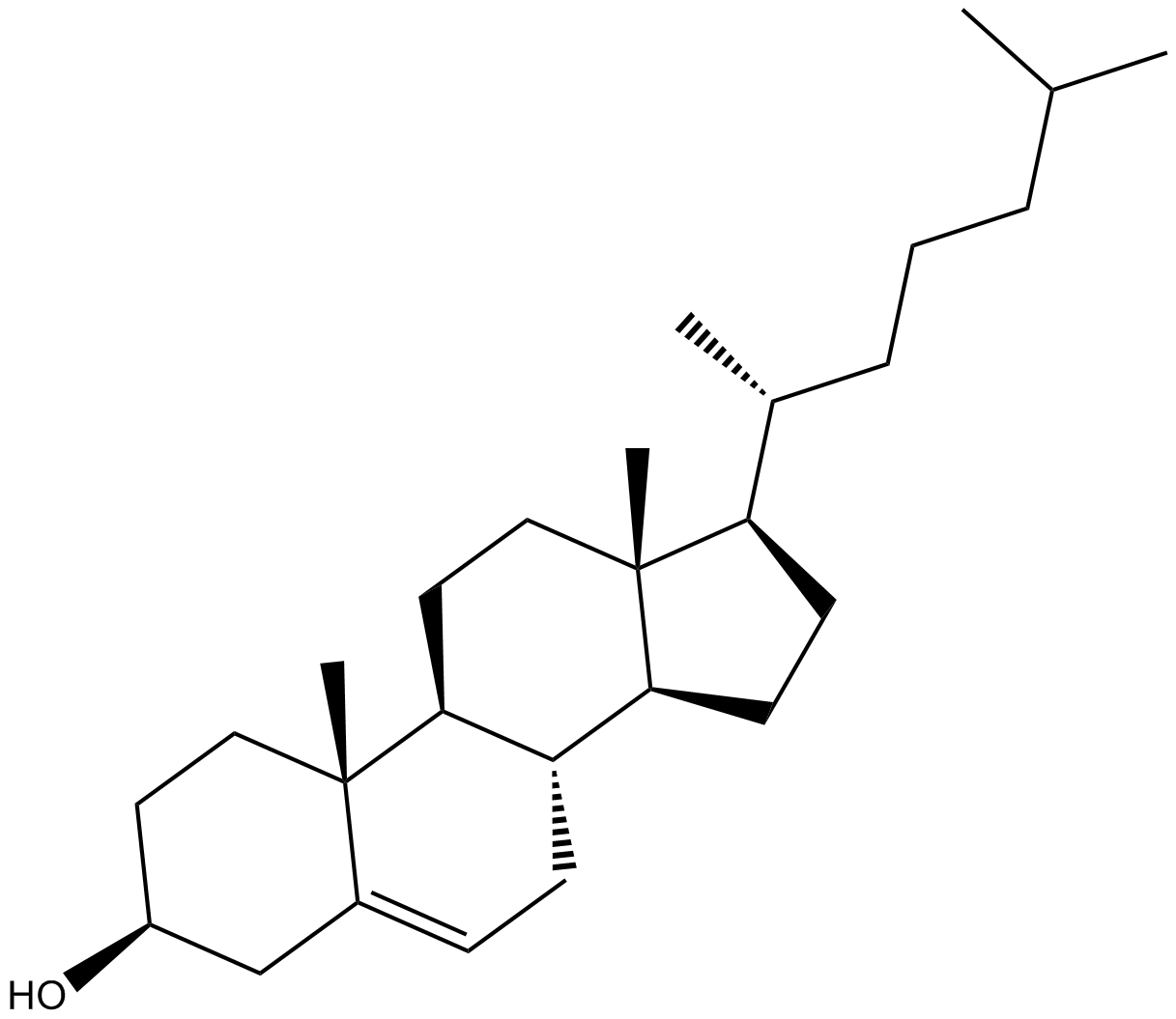
-
GC64477
Cholesterol-13C2
Cholesterol-13C2 is the 13C labeled Cholesterol.
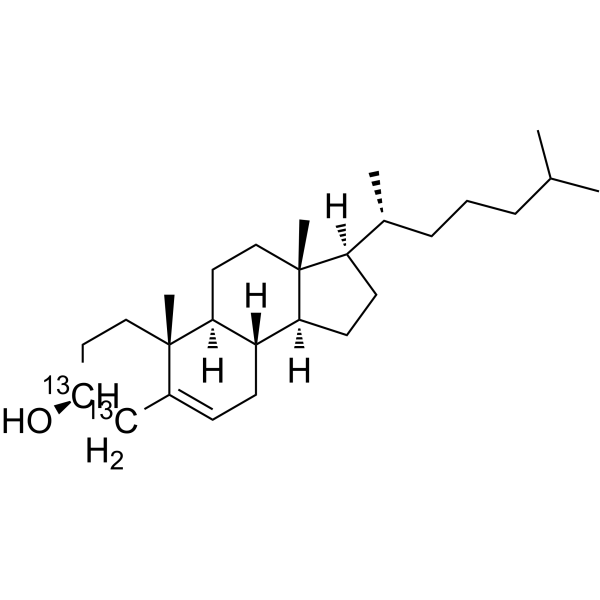
-
GC63843
Cholesterol-13C3
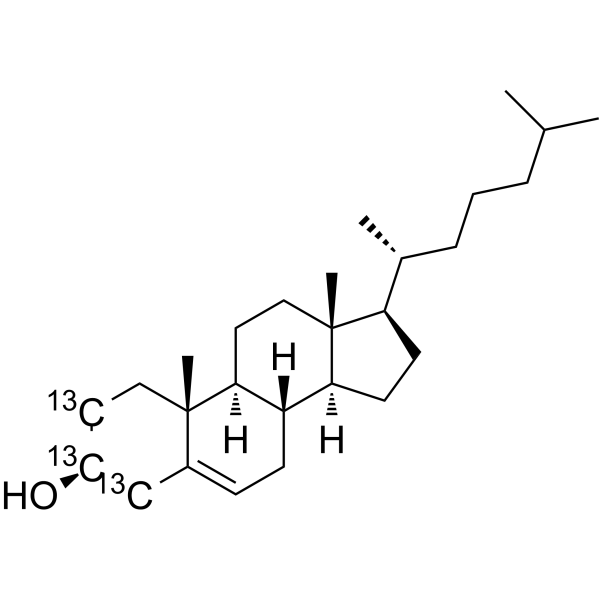
-
GC64334
Cholesterol-13C5
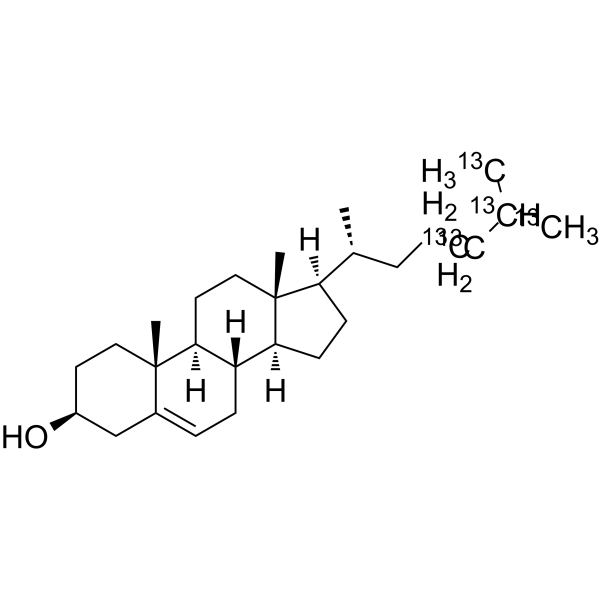
-
GN10028
Chrysin
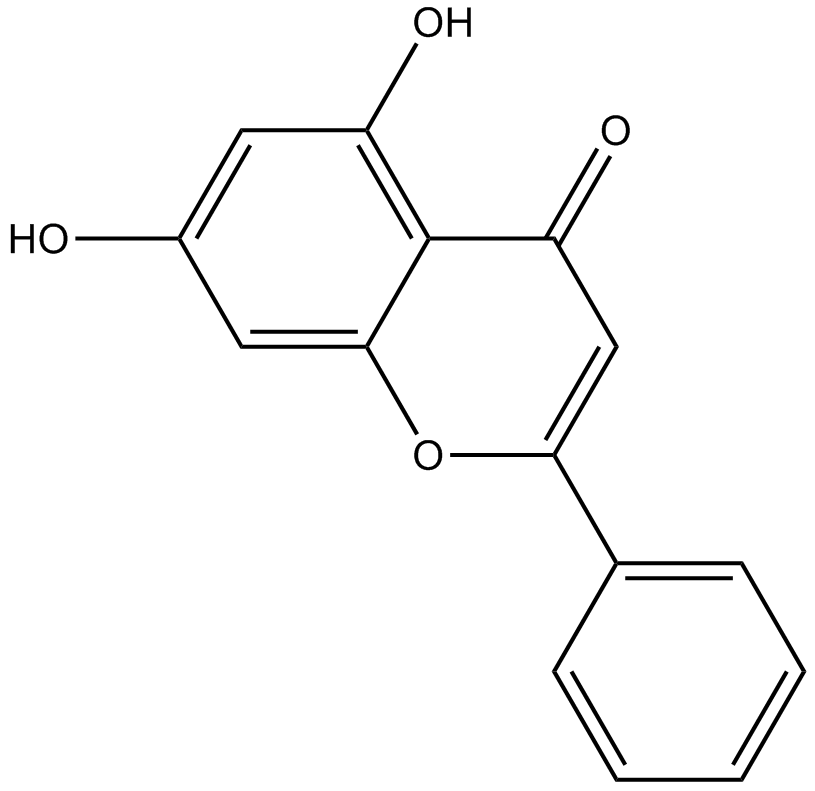
-
GC70175
citrate
Zuclomiphene-d4 (citrate) is the deuterated form of Zuclomiphene citrate. Zuclomiphene citrate has anti-estrogenic effects and is more effective than its trans-isomer in inhibiting the secretion of luteinizing hormone (LH). It is also an orally active cholesterol-lowering agent.
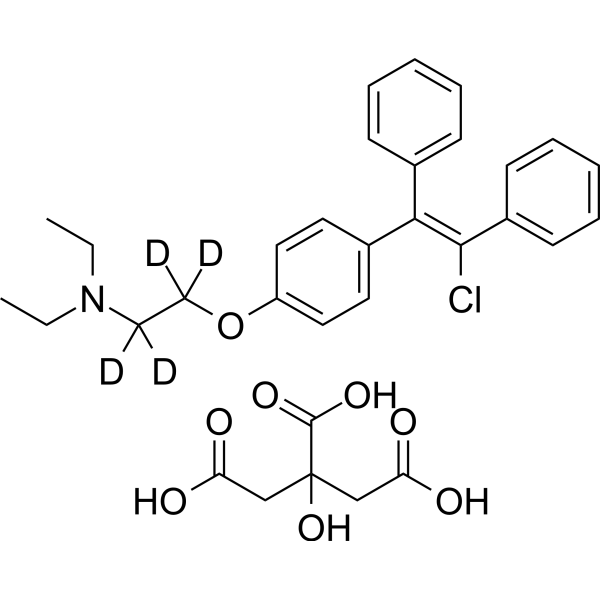
-
GC15366
Clomiphene citrate
Selective estrogen receptor modulator
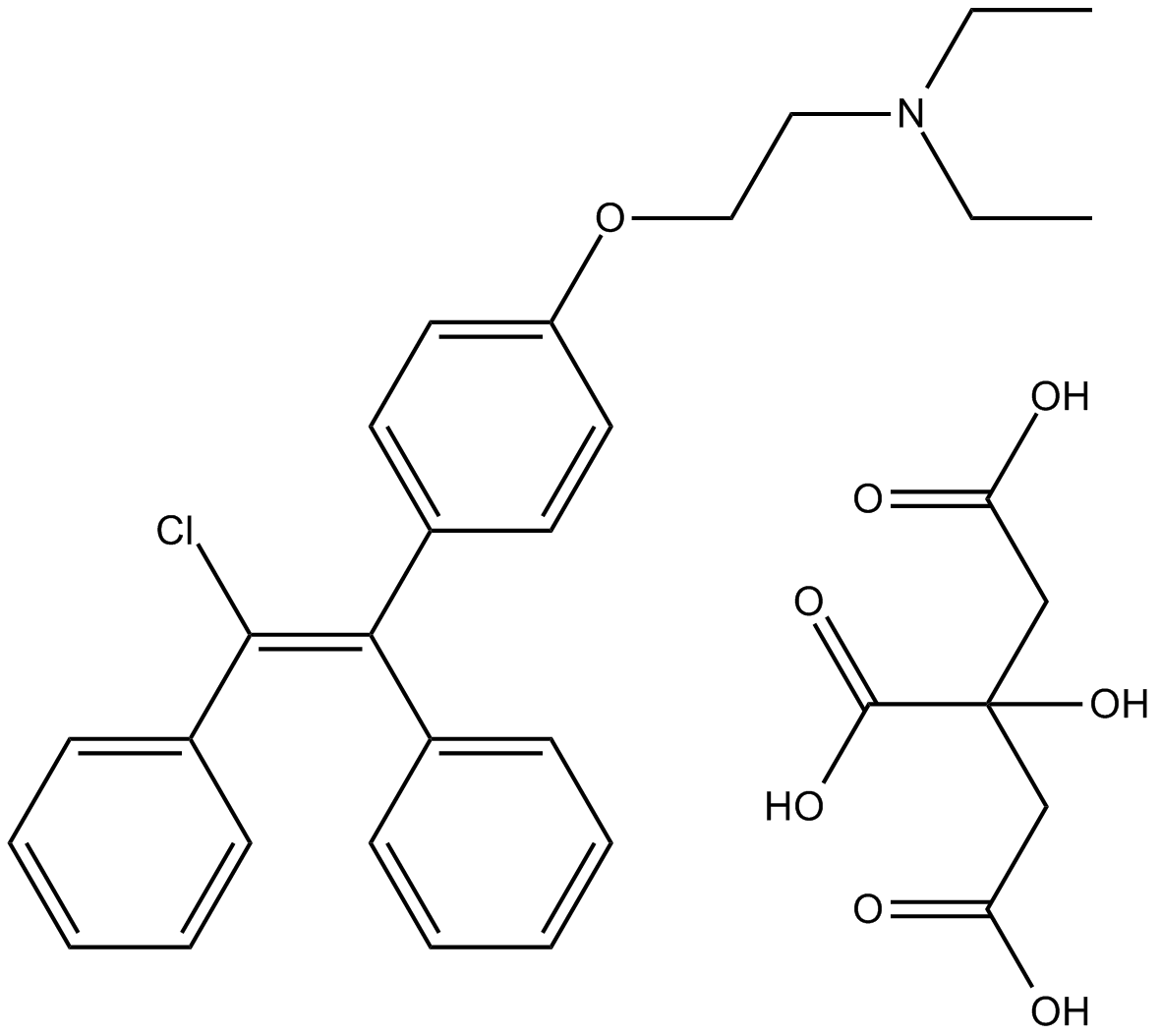
-
GC10002
Coumestrol
competitive binder of the estrogen receptors ERα
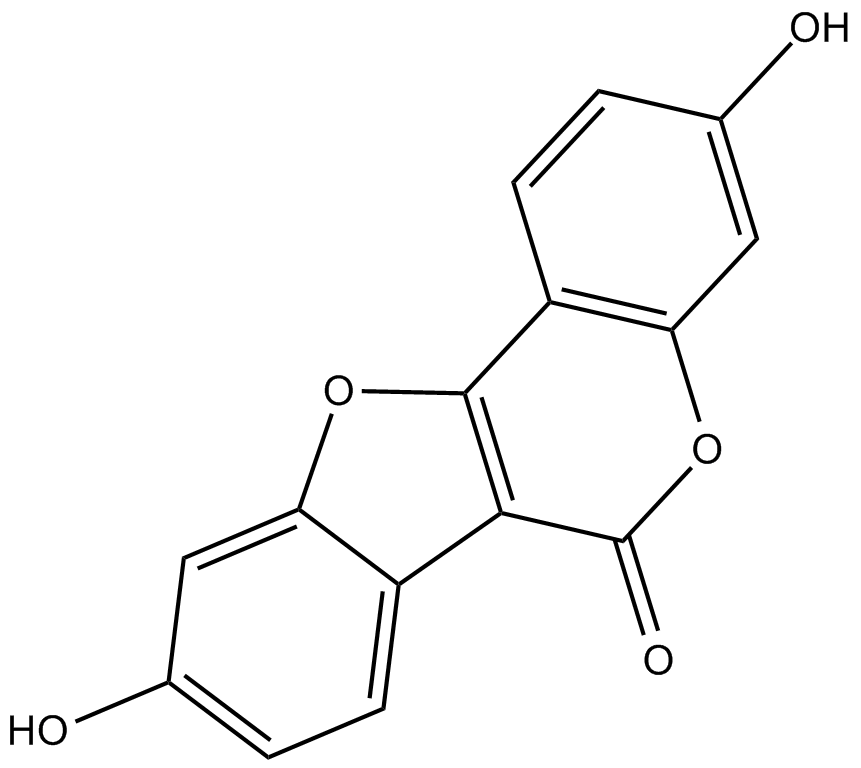
-
GC17688
Diarylpropionitrile(DPN)
Diarylpropionitrile(DPN) (Diarylpropionitrile) is a non-steroidal estrogen receptor β (ERβ) selective ligand, with an EC50 of 0.85 nM.
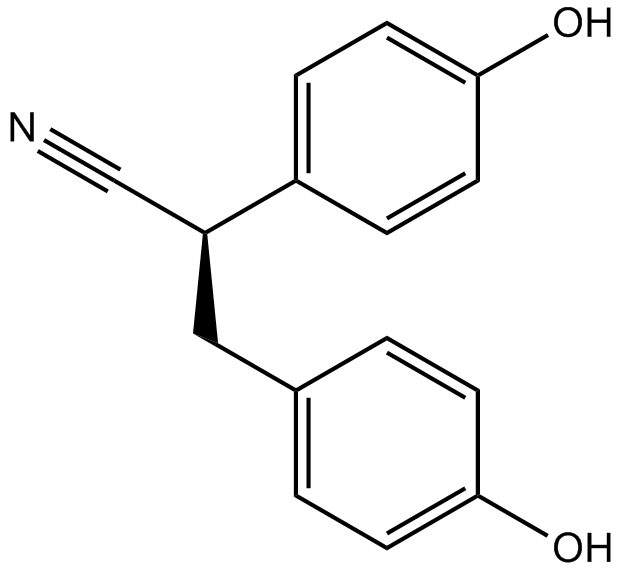
-
GC31008
Dienestrol
Dienestrol is a synthetic, non-steroidal estrogen, is an estrogen receptor agonist, for the treatment of menopausal and postmenopausal symptoms.
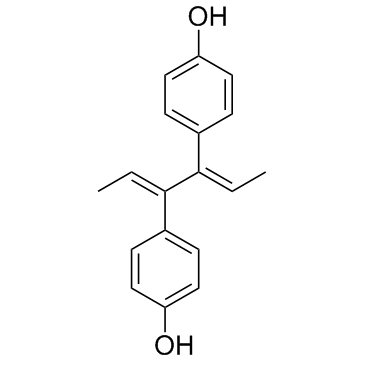
-
GC11215
Diethylstilbestrol
synthetic nonsteroidal estrogen

-
GC38098
Dihydroresveratrol
Dihydroresveratrol, a potent phytoestrogen, is a hormone receptor modulator. Dihydroresveratrol exhibits proliferative effects in androgen-independent prostate and breast cancer cells at picomolar and nanomolar concentrations.
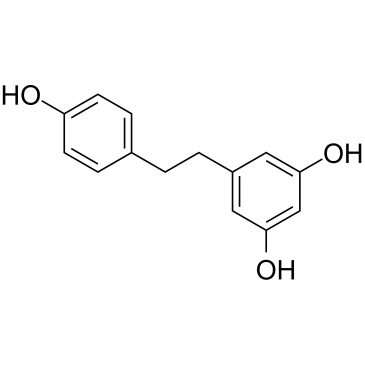
-
GC63988
DK1
DK1 is a potent modulator of estrogen related receptor.
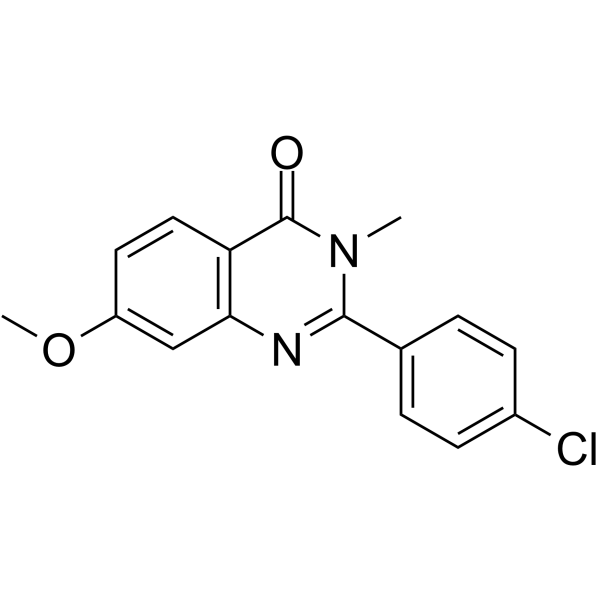
-
GC63989
DK3
DK3 is a potent and selective estrogen-related receptor alpha (ERRα) agonist.
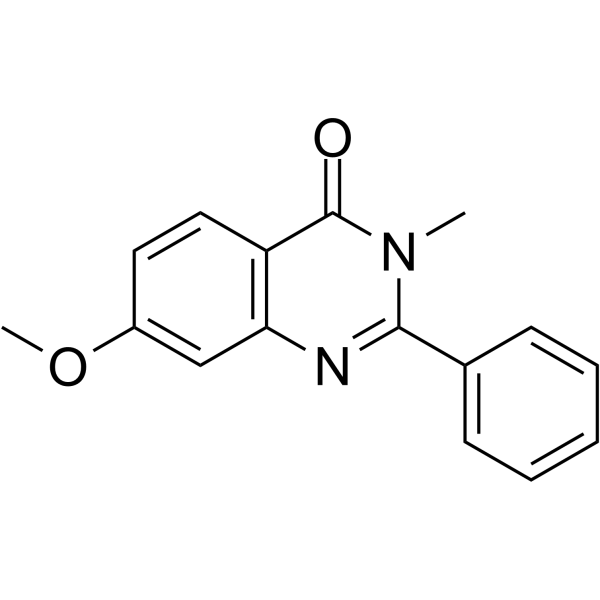
-
GC39707
Droloxifene
A selective estrogen receptor modulator
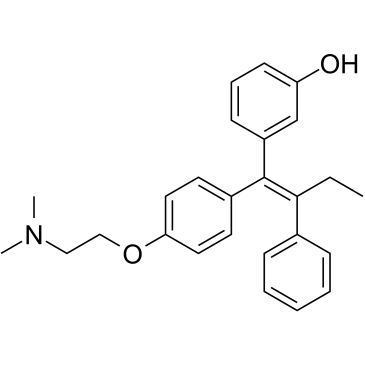
-
GC64652
DS20362725
DS20362725 is an estrogen-related receptor α (ERRα) agonist.
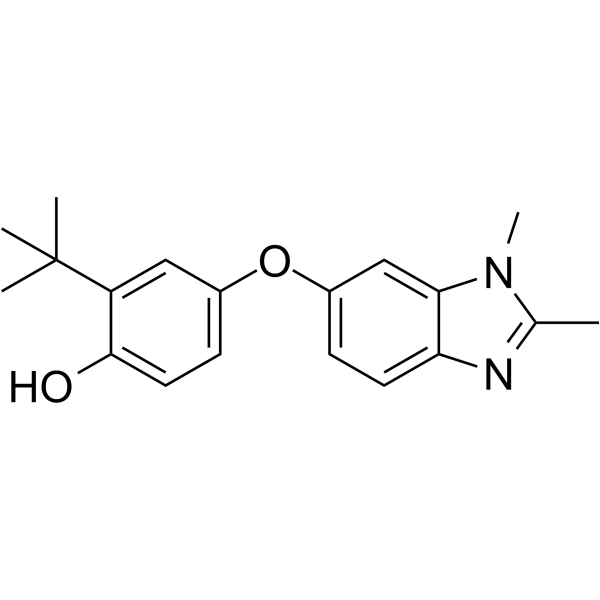
-
GC64533
DS45500853
DS45500853 is an estrogen-related receptor α (ERRα) agonist.
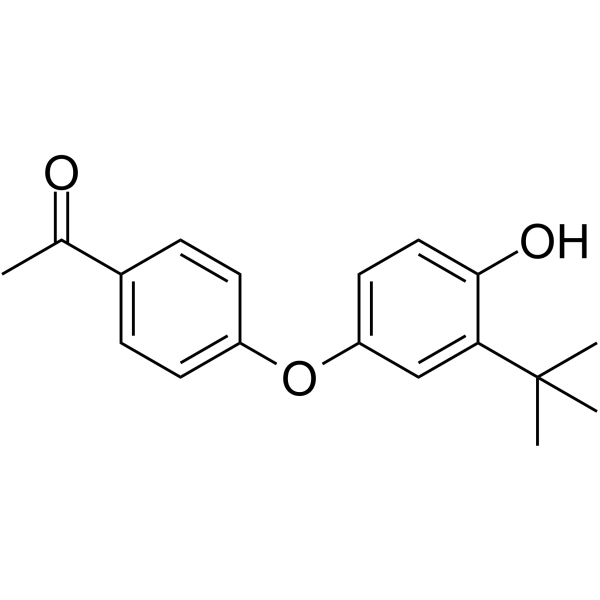
-
GC10394
DY131
An ERRβ/γ agonist
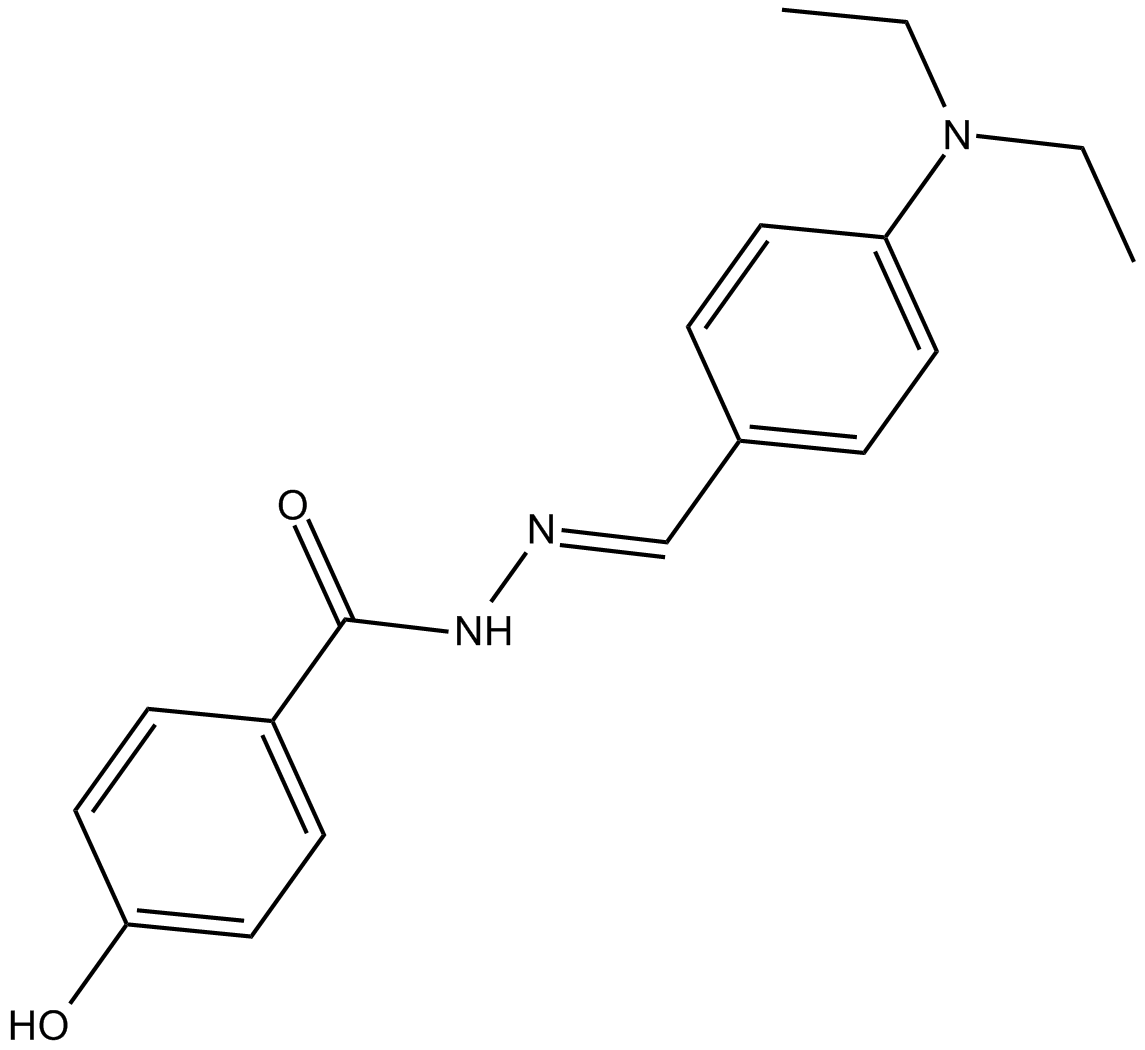
-
GC33349
E3 ligase Ligand 5
E3 ligase Ligand 5 is an estrogen-related receptor α (ERRα) antagonist with IC50s of 0.04 and 2.8 μM for ERRα and ERRγ, respectively.
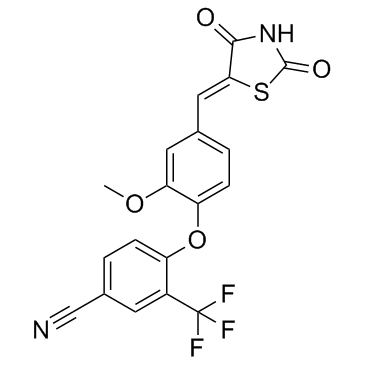
-
GC33025
Elacestrant (RAD1901)
Elacestrant (RAD1901) (RAD1901) is an orally available selective estrogen receptor degrader (SERD) with IC50s of 48 and 870 nM for ERα and ERβ, respectively.
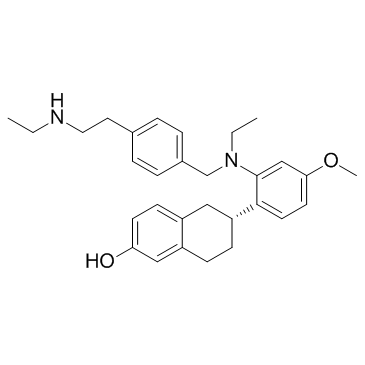
-
GC62379
Elacestrant (S enantiomer)
Elacestrant S enantiomer (RAD1901 S enantiomer) is an low activity enantiomer of elacestrant. Elacestrant (RAD1901) is a selective and orally available estrogen receptor (ERR) degrader with IC50 values of 48 and 870 nM for ERα and ERβ, respectively.
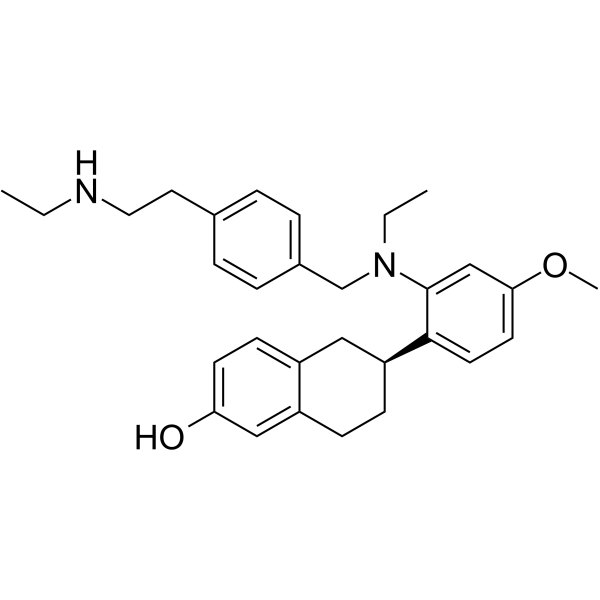
-
GC32696
Elacestrant dihydrochloride (RAD1901 dihydrochloride)
Elacestrant dihydrochloride (RAD1901 dihydrochloride) (RAD1901 dihydrochloride) is an orally available selective estrogen receptor degrader (SERD) with IC50s of 48 and 870 nM for ERα and ERβ, respectively.
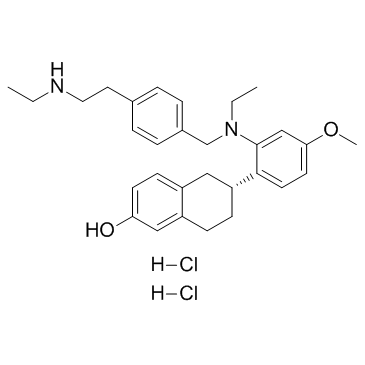
-
GC34293
Elacestrant S enantiomer (RAD1901 S enantiomer)
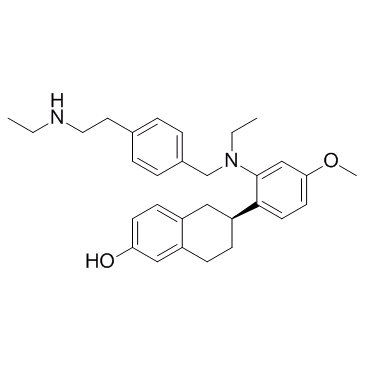
-
GC34294
Elacestrant S enantiomer dihydrochloride (RAD1901 S enantiomer dihydrochloride)
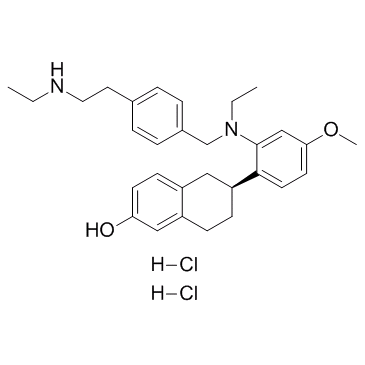
-
GC35985
Enclomiphene citrate
Enclomiphene ((E)-Clomiphene) citrate is a potent and orally active non-steroidal estrogen receptor antagonist, with antioestrogenic property.
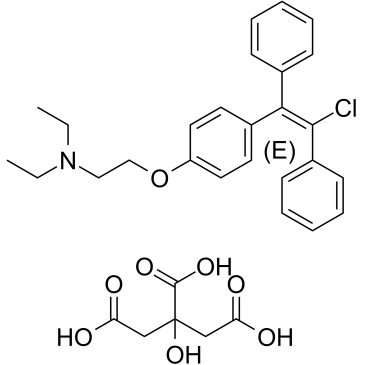
-
GC60806
Enclomiphene D4 hydrochloride
Enclomiphene D4 hydrochloride ((E)-Clomiphene D4 hydrochloride; trans-Clomiphene D4 hydrochloride; Enclomifene D4 hydrochloride)?is a deuterium labeled Enclomiphene.
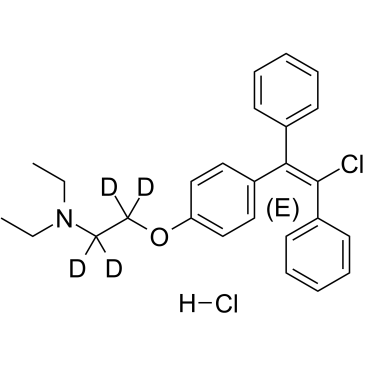
-
GC12140
Endoxifen
Endoxifen Z-isomer is the most important Tamoxifen metabolite responsible for eliciting the anti-estrogenic effects of this drug in breast cancer cells expressing estrogen receptor-alpha (ERα).
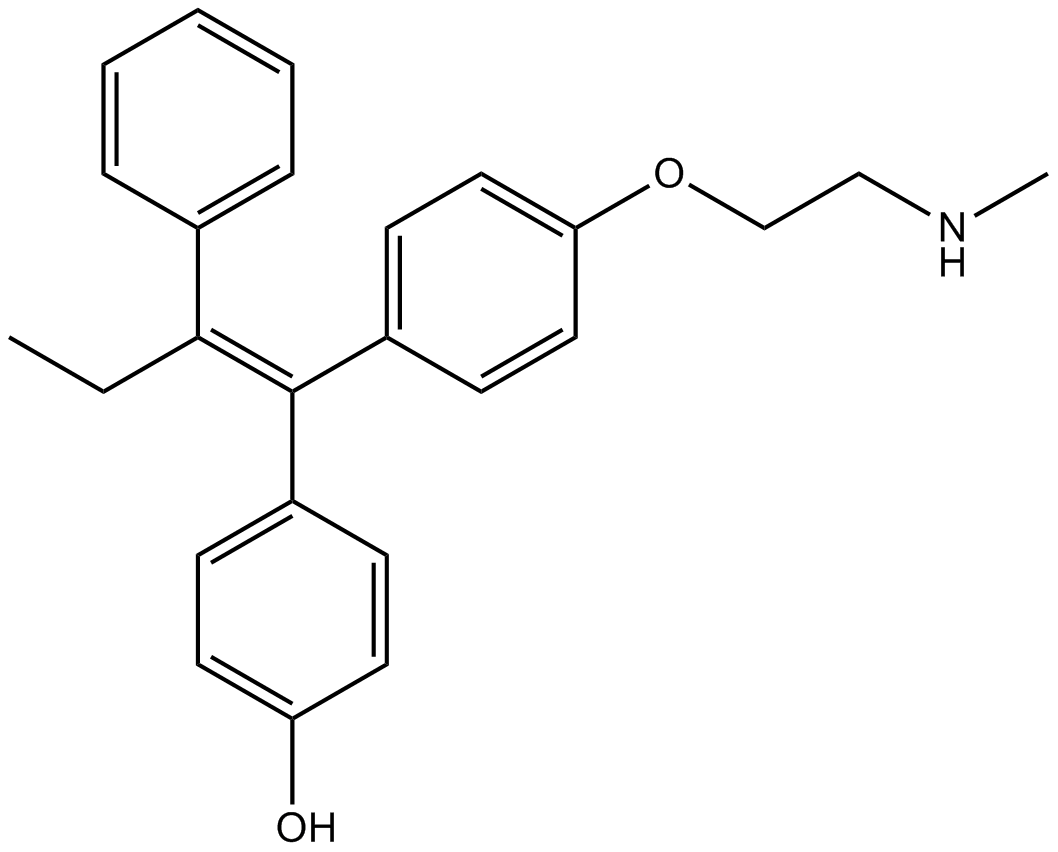
-
GC35988
Endoxifen E-isomer
Endoxifen E-isomer (E-Endoxifen), an E-isomer of Endoxifen, is an impurity in Endoxifen Z-isomer drug substance. Endoxifen E-isomer exhibits antiestrogenic effects.
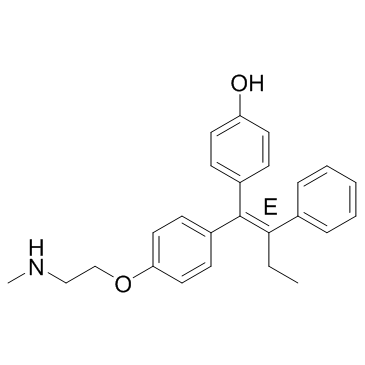
-
GC35989
Endoxifen E-isomer hydrochloride
Endoxifen E-isomer hydrochloride (E-Endoxifen hydrochloride), an E-isomer of Endoxifen, is an impurity in Endoxifen Z-isomer drug substance. Endoxifen E-isomer hydrochloride exhibits antiestrogenic effects.
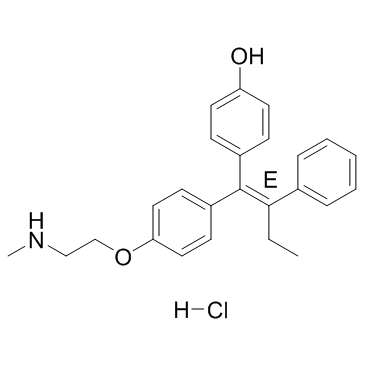
-
GC35990
Endoxifen hydrochloride
Endoxifen hydrochloride is a key active metabolite of Tamoxifen (TAM) with higher affinity and specificity to estrogen receptor that also inhibits aromatase activity. Endoxifen hydrochloride has the potential for breast cancer study.
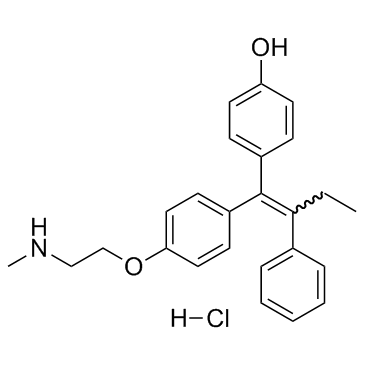
-
GC35991
Endoxifen Z-isomer hydrochloride
Endoxifen Z-isomer hydrochloride is the most important Tamoxifen metabolite responsible for eliciting the anti-estrogenic effects of this drug in breast cancer cells expressing estrogen receptor-alpha (ERα).
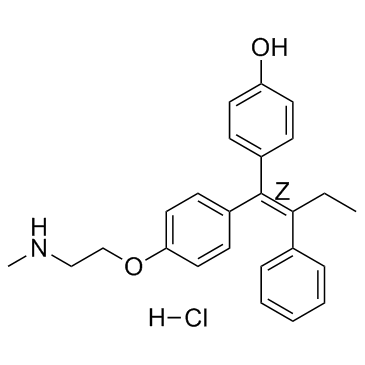
-
GC34006
Equilin (7-Dehydroestrone)
Equilin (7-Dehydroestrone) (7-Dehydroestrone) is an important member of the large group of oestrogenic substances and is chemically related to menformon (oestrone).
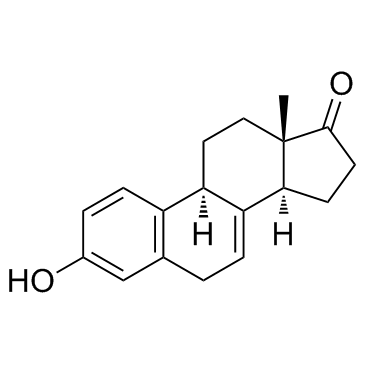
-
GC16292
Equol
non-steroidal estrogen
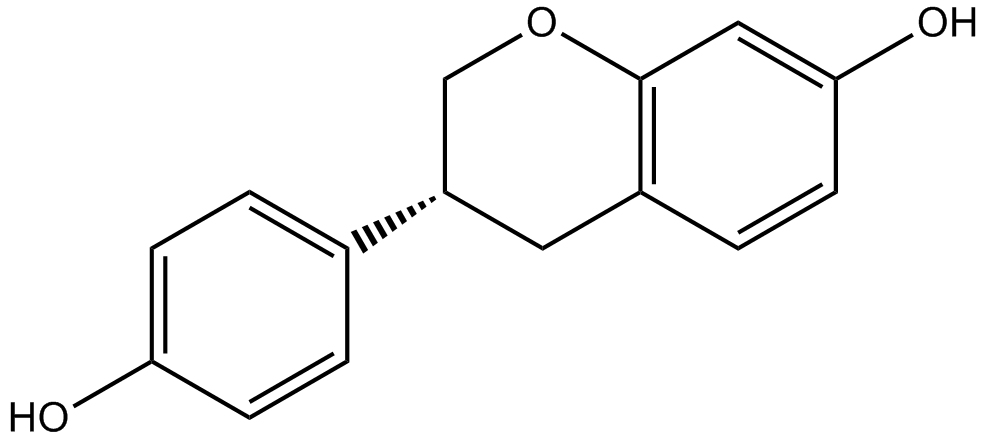
-
GC67927
ERα degrader-2
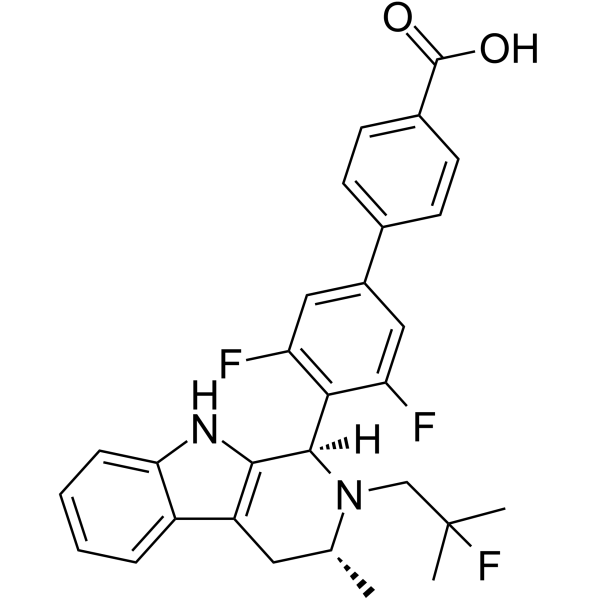
-
GC10389
ERB 041
ERB 041 (ERB-041) is a potent and selective estrogen receptor (ER) β agonist with IC50s of 5.4, 3.1 and 3.7 nM for human, rat and mouse ERβ, respectively. ERB 041 displays >200-fold selectivity for ERβ over ERα. ERB 041 is a potent skin cancer chemopreventive agent that acts by dampening the WNT/β-catenin signaling pathway. ERB 041 induces ovarian cancer apoptosis.
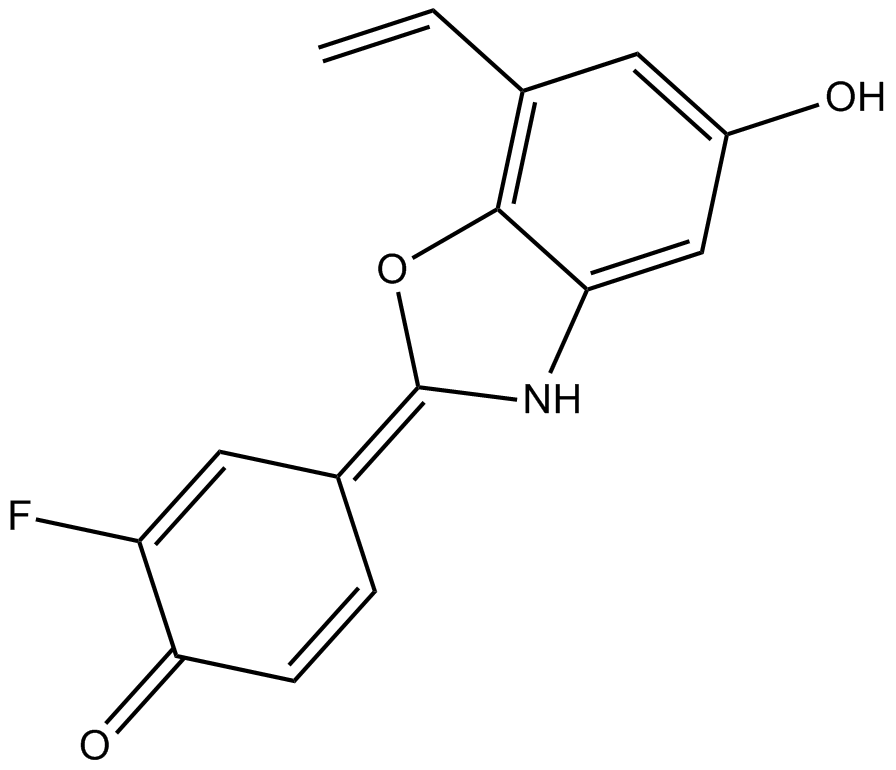
-
GC30650
ERB-196 (WAY-202196)
ERB-196 (WAY-202196) is a nonsteroidal selective estrogen receptor-β (ERβ) agonist.
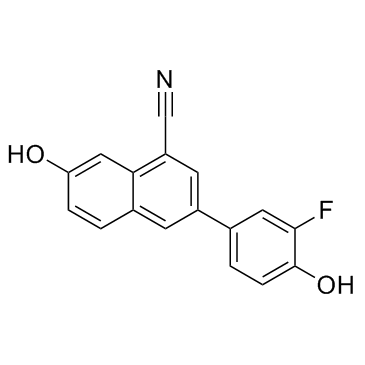
-
GC36001
ERD-308
ERD-308 is a highly potent von Hippel-Lindau-based PROTAC degrader of estrogen receptor (ER) for ER positive breast cancer treatment. ERD-308 induces >95% of ER degradation at concentrations as low as 5 nM in both cell lines (DC50 (concentration causing 50% of protein degradation) of 0.17 nM and 0.43 nM in MCF-7 and T47D ER+ cells, respectively).
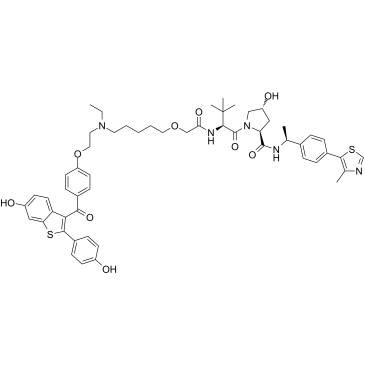
-
GC38777
ERRα antagonist-1
ERRα antagonist-1 (Compound A) is a selective and high affinity estrogen-related receptor α (ERRα) antagonist. ERRα antagonist-1 inhibits interaction of ERRα with Proliferator-activated Receptor γ Coactivator-1α (PGC-1α) and PGC-1β, the IC50 values are 170 nM and 180 nM, respectively. ERRα antagonist-1 does not inhibit the interaction of either ERRβ or ERRγ with PGC-1α and PGC-1β coactivator, and also does not inhibit interaction of ERα or ERβ with PGC-1α or SRC-1.
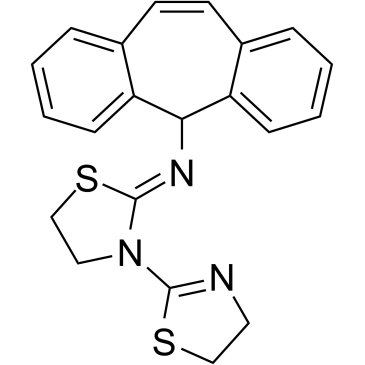
-
GC11822
Erteberel (LY500307)
Erteberel (LY500307) (LY500307) is a potent and selective estrogen receptor beta (ERβ) agonist with Ki and EC50 of 1.54 nM and 3.61 nM, respectively.
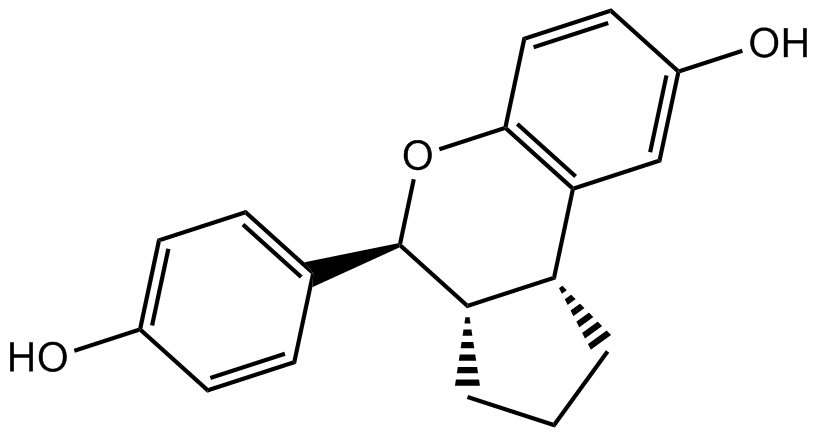
-
GC19478
Estetrol
An estrogen steroid hormone

-
GC15245
Estradiol Benzoate
Estrogen/progestogen receptor agonist
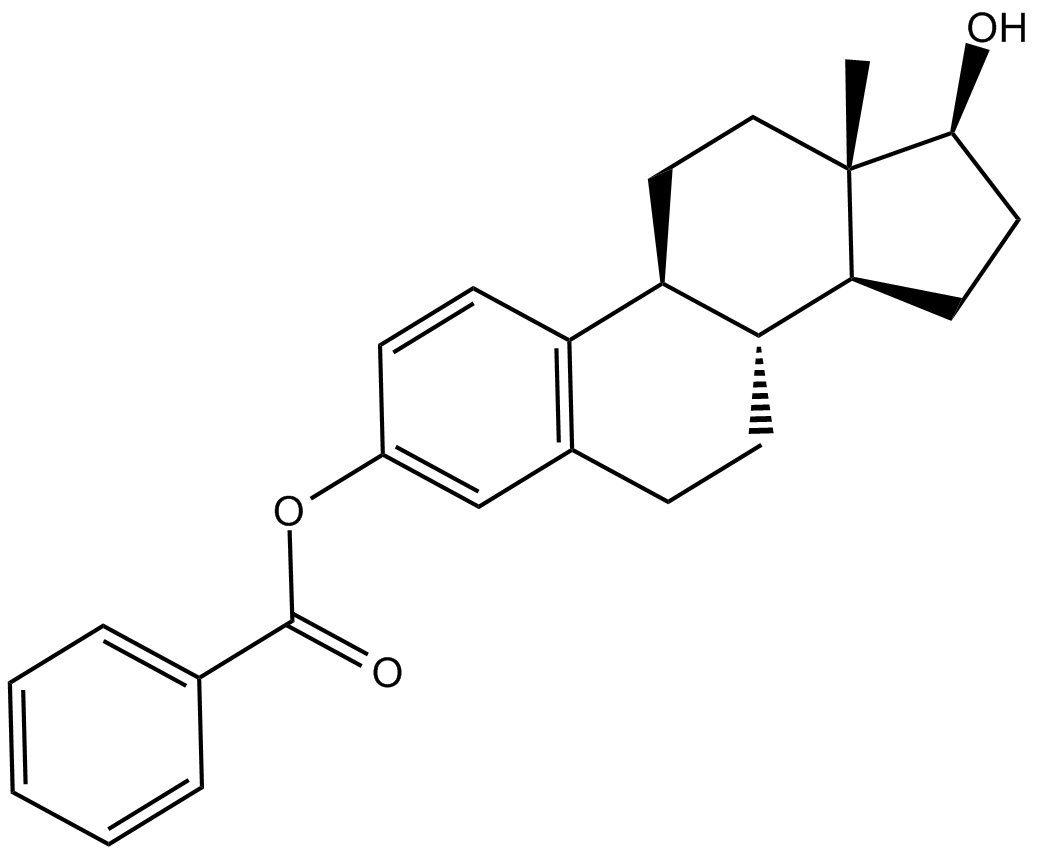
-
GC10139
Estradiol Cypionate
Estrogen receptor inhibitor
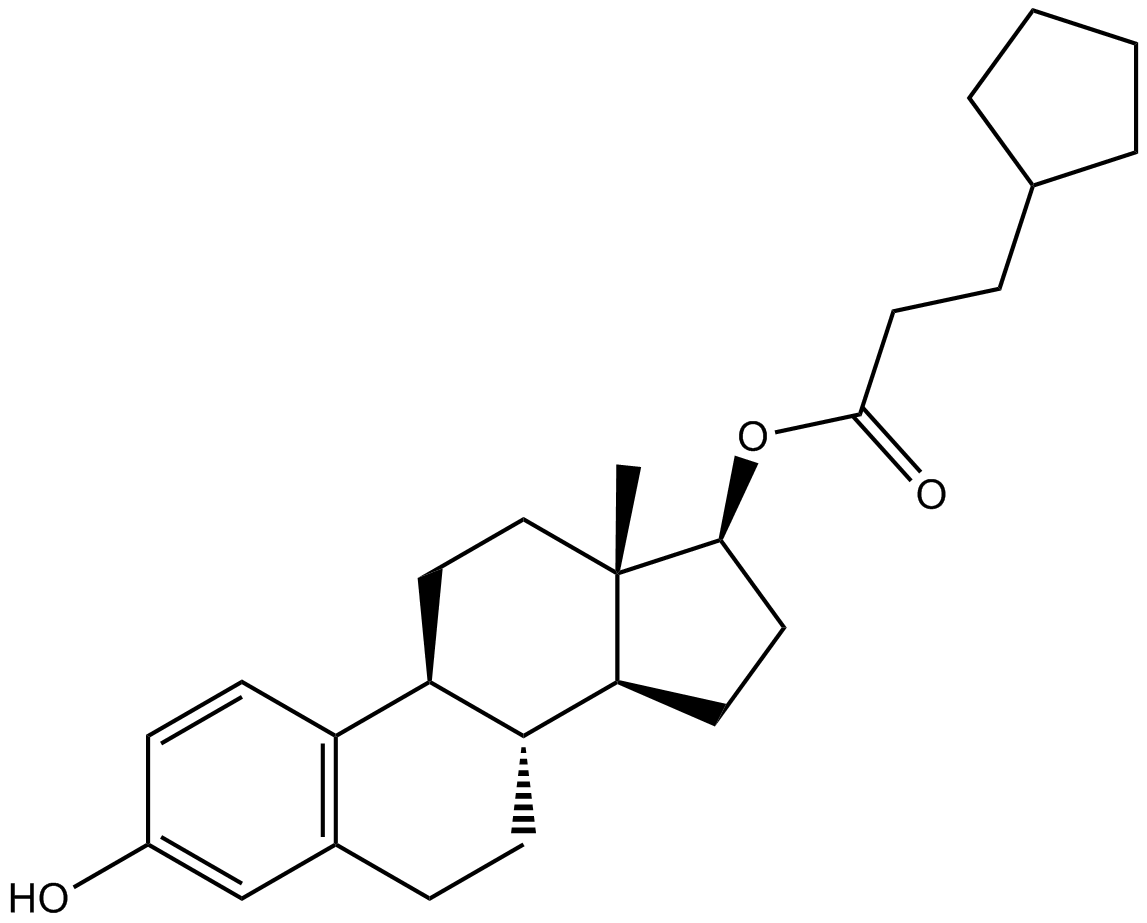
-
GC60815
Estradiol dipropionate
Estradiol dipropionate is a combined estrogen-progesterone, acts as an estrogen and progesterone agonist.
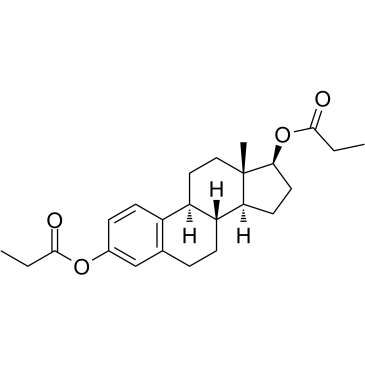
-
GC66878
Estradiol enanthate
Estradiol enanthate is a shorter-acting estrogen. The combination of Estradiol enanthate and dihydroxyprogesterone acetophenide can be used as a monthly injectable contraceptive.
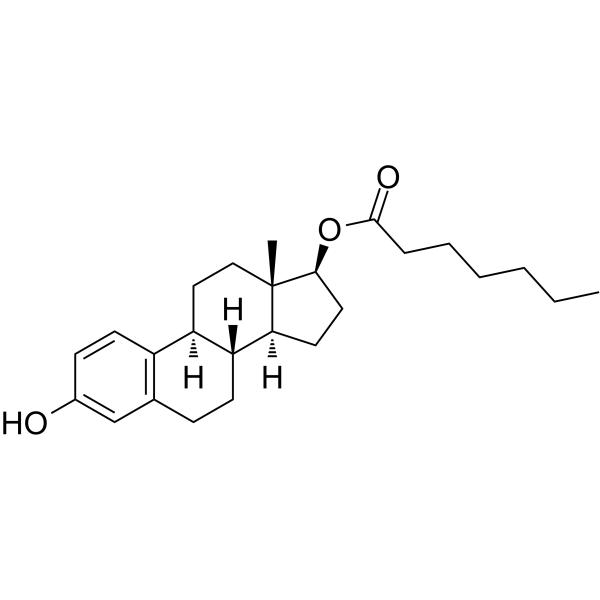
-
GC11796
Estradiol valerate
Estradiol valerate (β-estradiol 17-valerate) is a synthetic estrogen widely used in combination with other steroid hormones in hormone replacement therapy drugs.
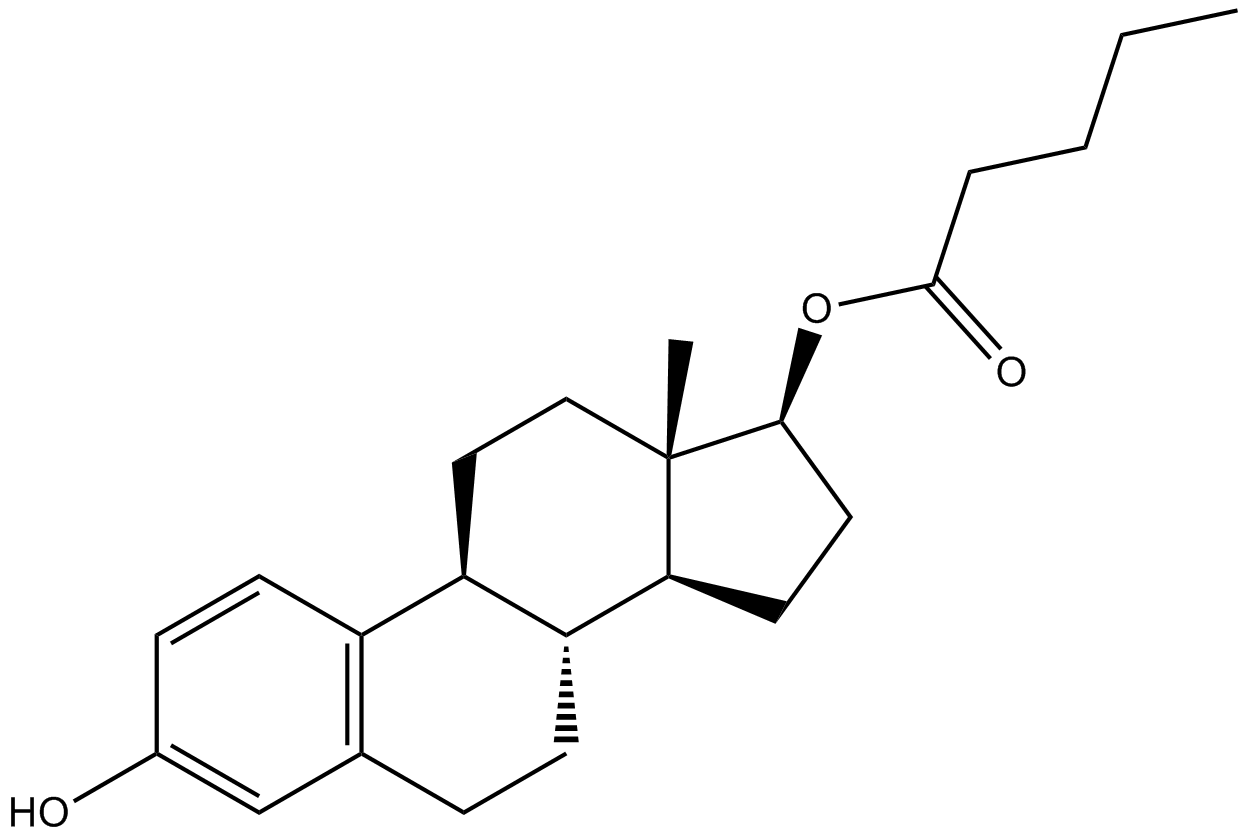
-
GC63643
Estradiol-d4
Estradiol-d4 (β-Estradiol-d4) is the deuterium labeled Estradiol.
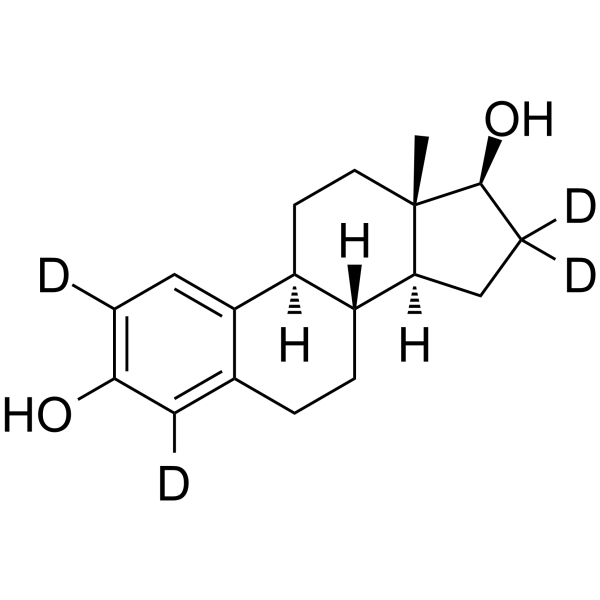
-
GC12182
Estriol
Estrogen receptor antagonist
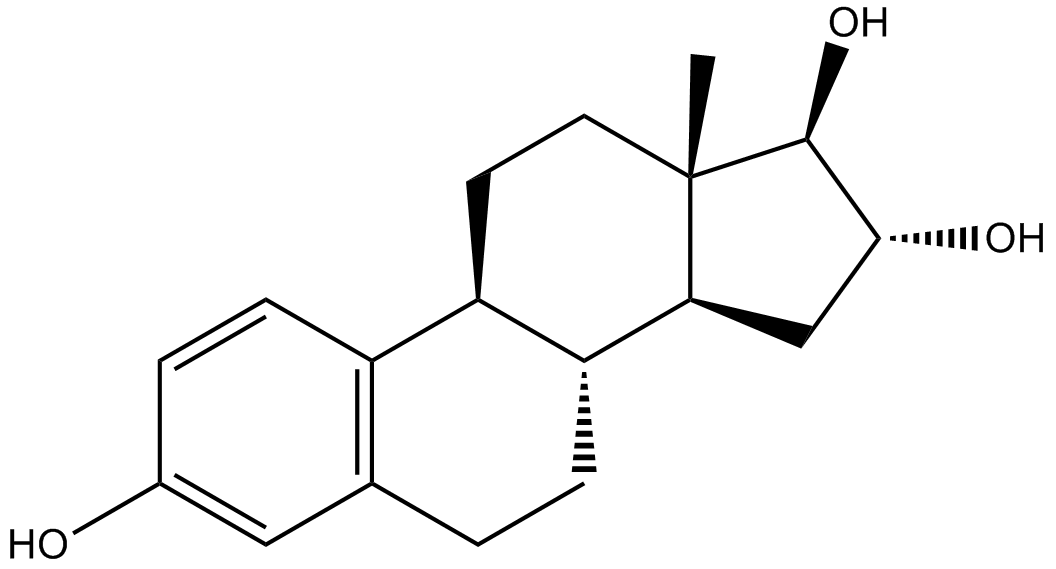
-
GC60816
Estrogen receptor modulator 1
Estrogen receptor modulator 1 (compound 18) is an orally active and selective estrogen receptor modulator (SERM), with a pIC50 of 0.46. Estrogen receptor modulator 1 induces regression of Tamoxifen-resistant, hormone independent xenograft tumors.
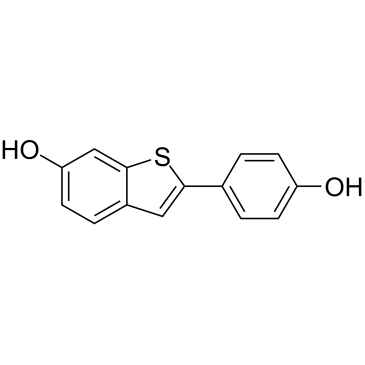
-
GC14385
Estrone
Estrogenic hormone
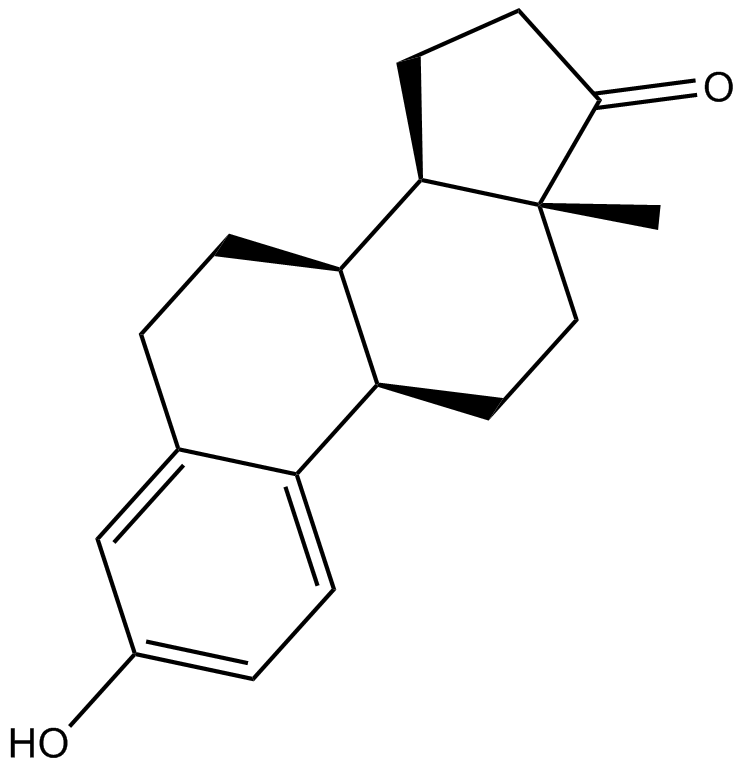
-
GC64437
Estrone-d4
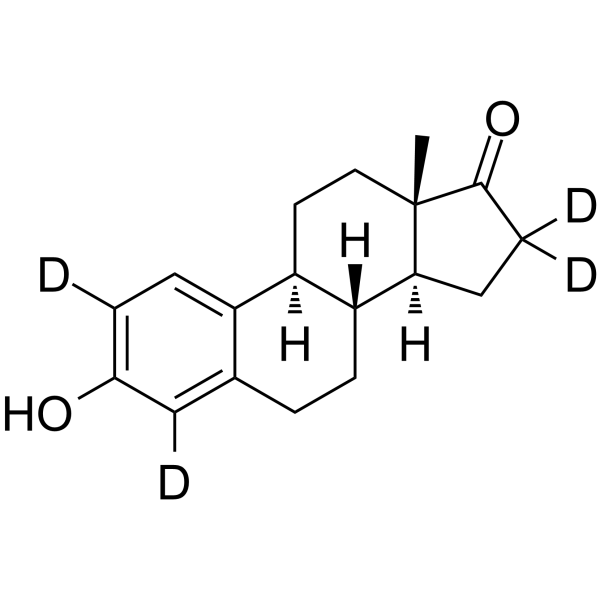
-
GC16852
Estropipate
Estrogen receptor agonist
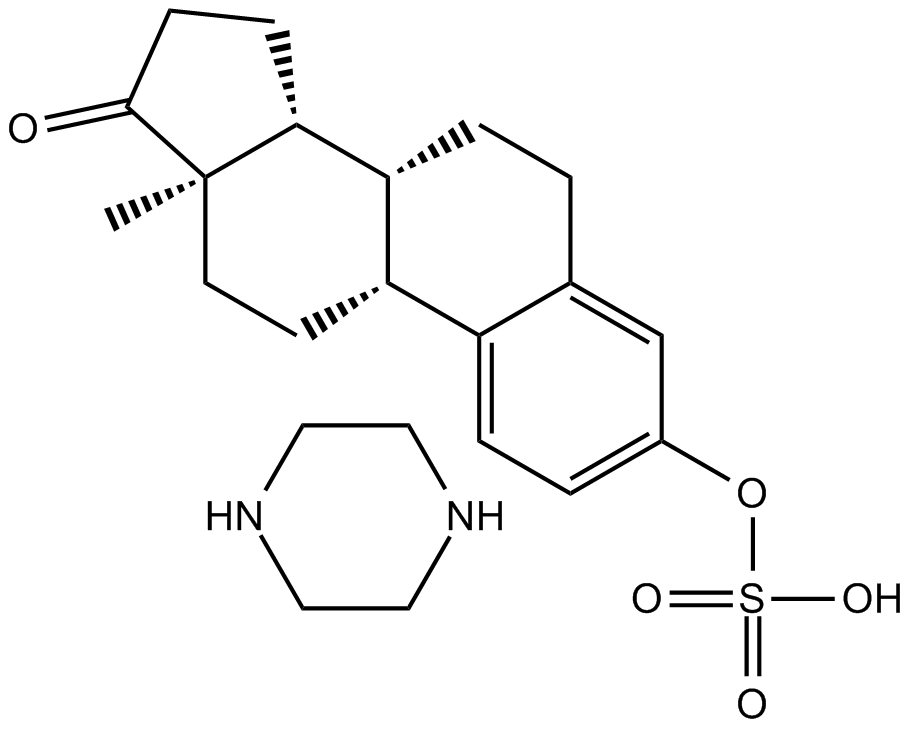
-
GC12148
Ethinyl Estradiol
Ethinyl Estradiol (17α-Ethynylestradiol;Ethynylestradiol) is an orally bio-active estrogen used in almost all modern formulations of combined oral contraceptive pills.
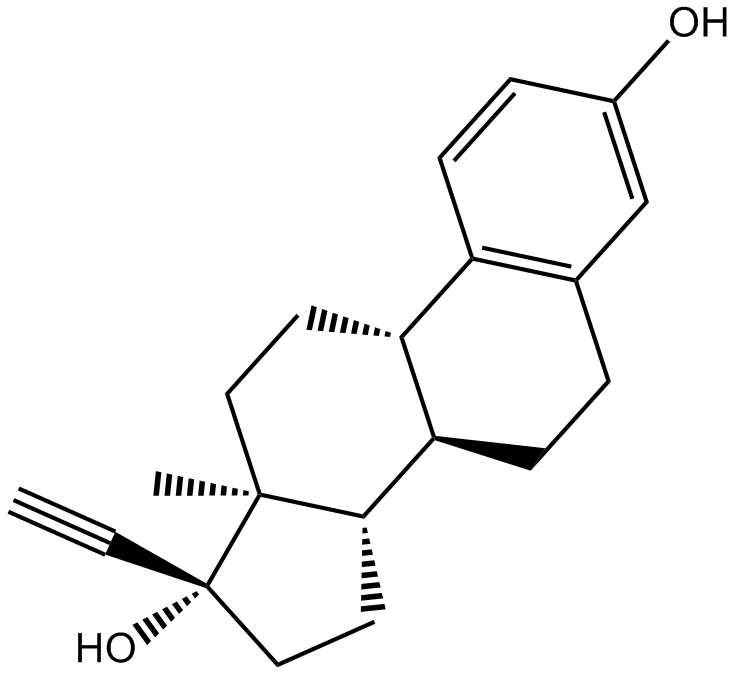
-
GC62484
FLTX1
FLTX1 is a fluorescent Tamoxifen derivative that can specifically label intracellular Tamoxifen-binding sites (estrogen receptors) under permeabilized and non-permeabilized conditions. FLTX1 exhibits the potent antiestrogenic properties of Tamoxifen in breast cancer cells. FLTX1 is devoid of the estrogenic agonistic effect on the uterus.
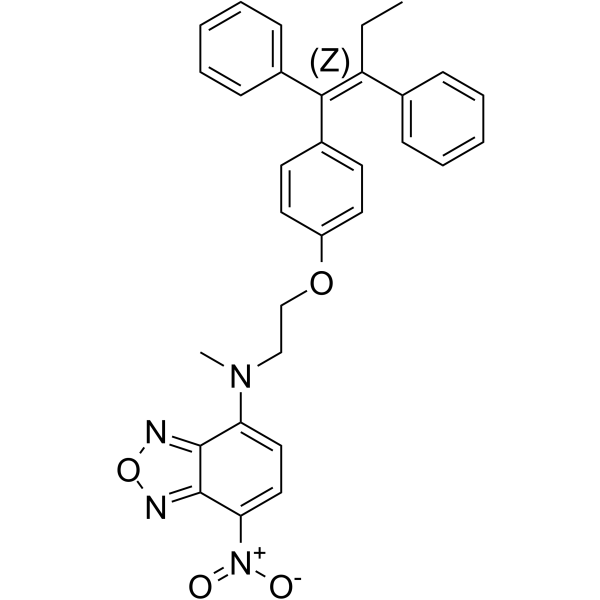
-
GC18000
Fulvestrant (ICI 182,780)
Fulvestrant is a selective estrogen receptor (ER) antagonist. It binds, blocks and degrades ER, then inhibits ER-mediated transcriptional activity with an IC50 of 9.4 nM.
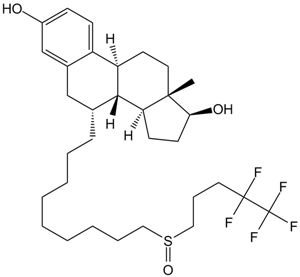
-
GC12766
G-1
G-1 is a selective and potent agonist of GPR30 with EC50 value about 2 nM.
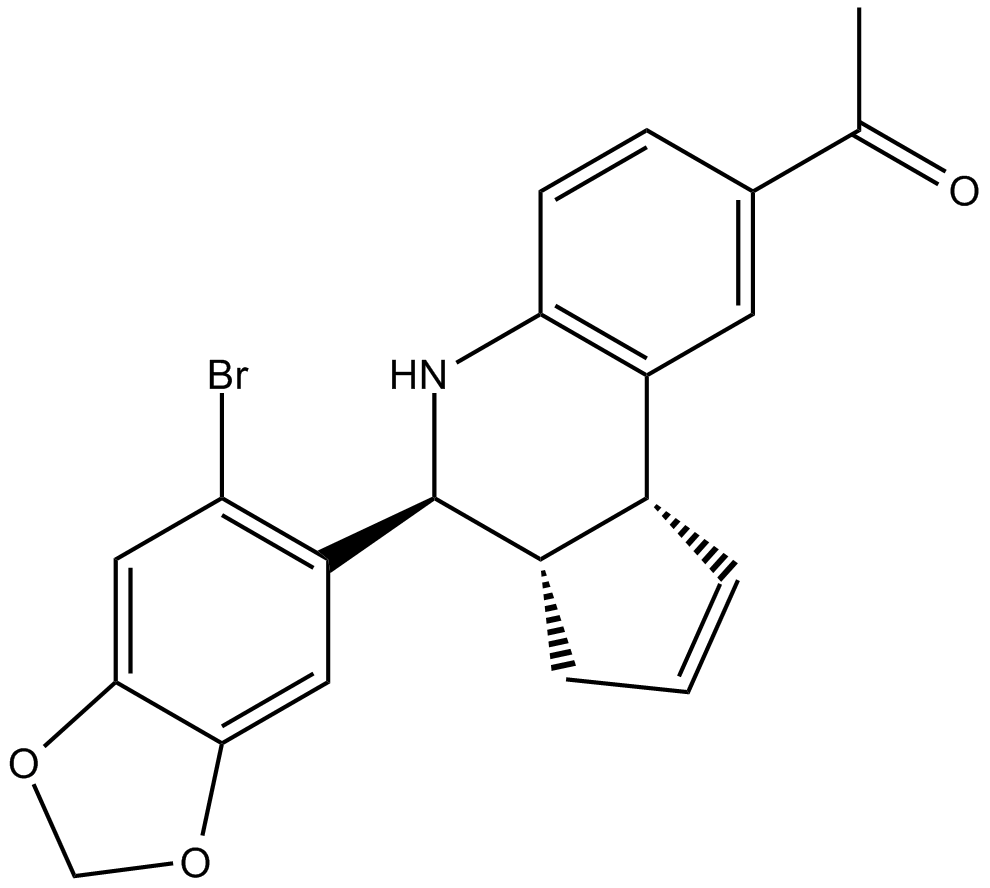
-
GC16618
G-15
A GPER receptor antagonist
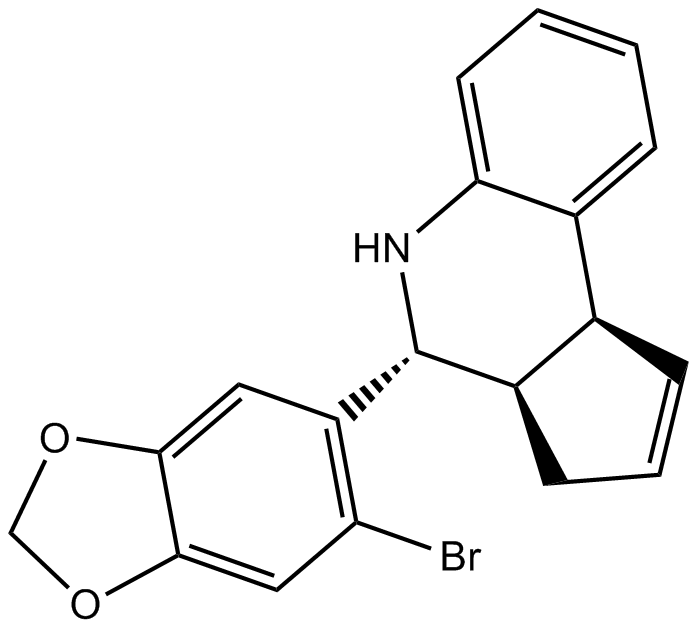
-
GC32920
GDC-0927 (SRN-927)
GDC-0927 (SRN-927) (SRN-927) is a potent, non-steroidal, orally bioavailable, selective estrogen receptor antagonist.
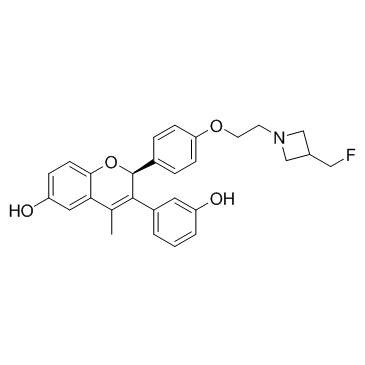
-
GC33193
GDC-0927 Racemate (SRN-927 Racemate)
GDC-0927 Racemate (SRN-927 Racemate) (SRN-927 Racemate) is a degrader of estrogen receptor, potently inhibits ER-α activity, with an IC50 of 0.2 nM, and is used in the research of ER-related diseases.
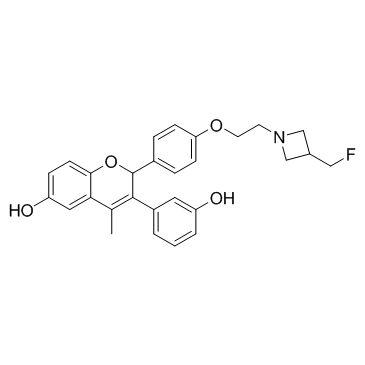
-
GC31746
Gestrinone (R 2323)
An androgen and progesterone receptor ligand used to treat endometriosis
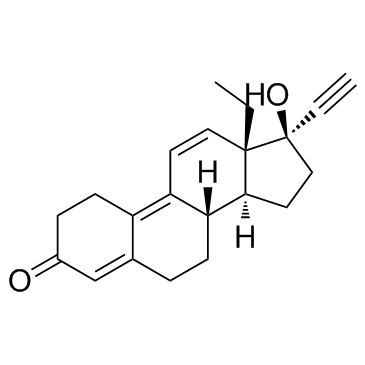
-
GC65609
Glicoricone
Glicoricone, a phenolic compound, is isolated from a species of licorice.
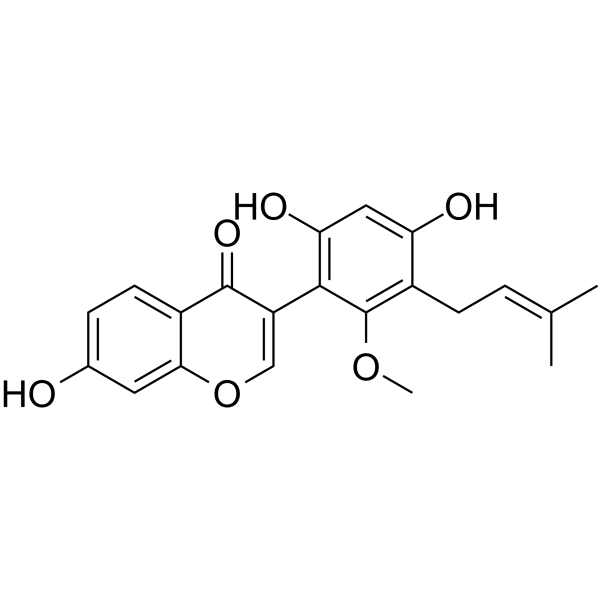
-
GC65606
GNE-274
GNE-274 is a non-degrader that is structurally related to GDC-0927 (ER degrader). GNE-274 does not induce ER turnover and functions as a partial ER agonist in breast cancer cell lines.?GNE-274 increase chromatin accessibility at ER-DNA binding sites, while GDC-0927 do not. GNE-274 is a potent inhibitor of ER-ligand binding domain (LBD). GNE-274 can be used for cancer research.
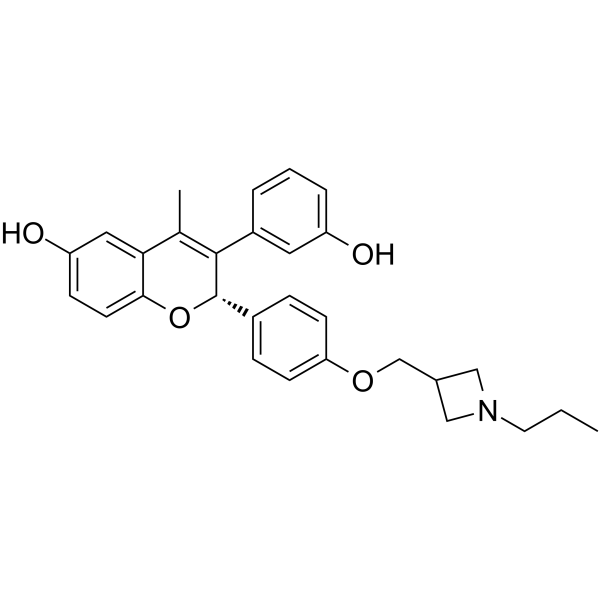
-
GC65590
GNE-502
GNE-502 is an orally active and potent degrader for estrogen receptor (ER). GNE-502 can be used for the research of breast cancer.
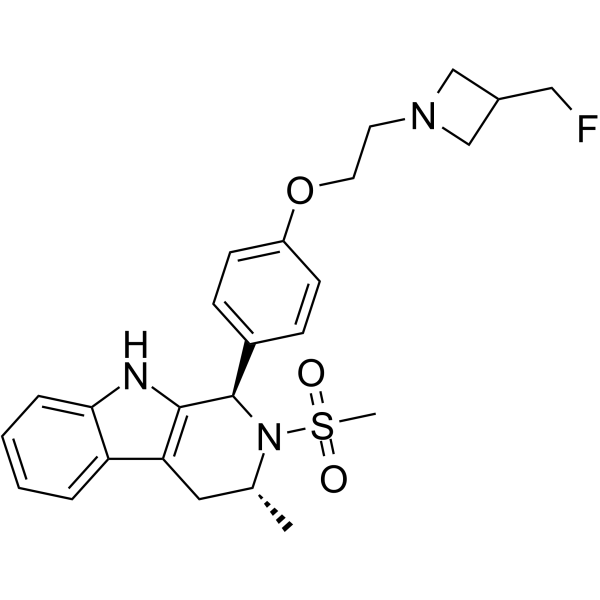
-
GC61817
GPR30 agonist-1
GPR30 agonist-1 is a G protein-coupled receptor 30 (GPR30) agonist.
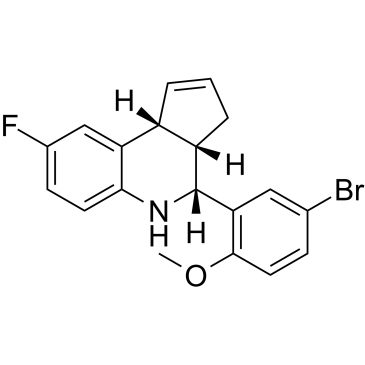
-
GC10558
GSK 4716
estrogen-related receptors ERRβ and ERRγ agonist
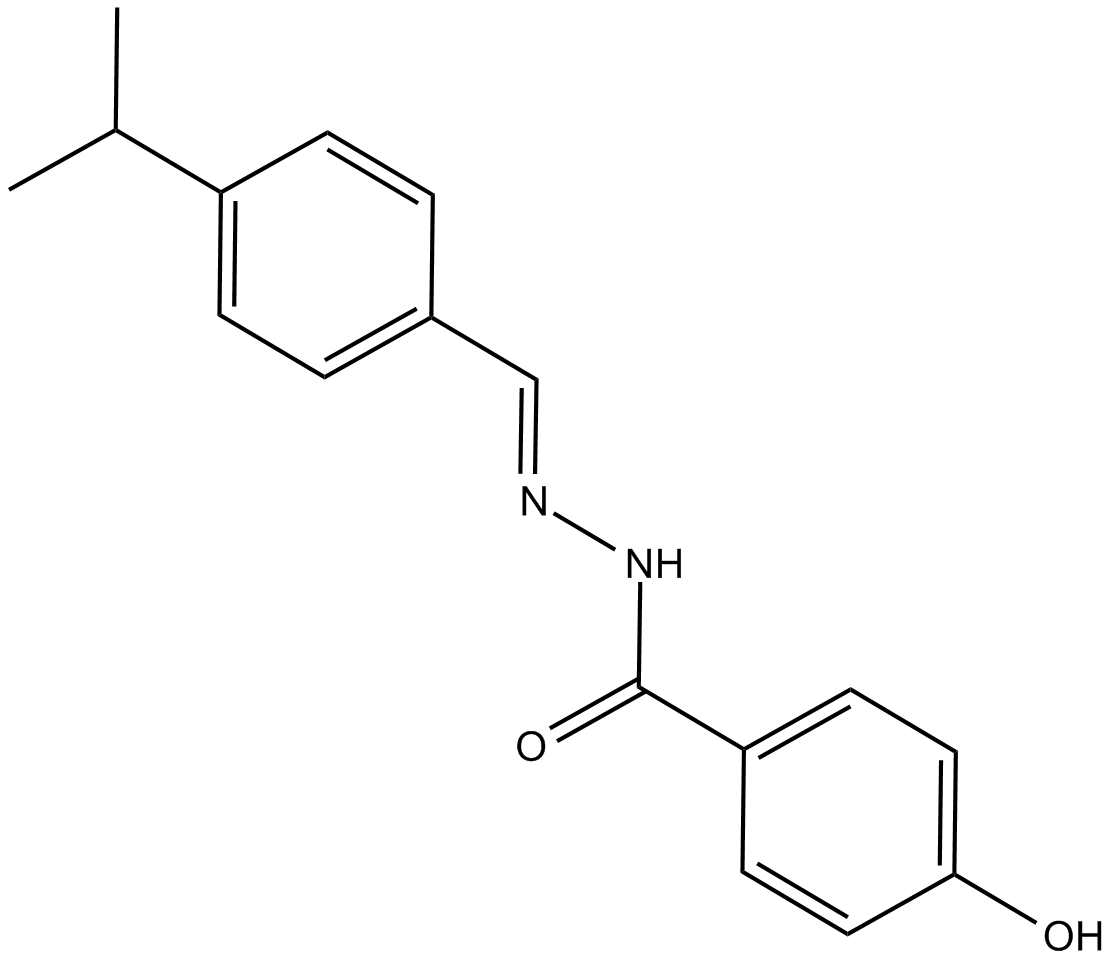
-
GC64453
GSK5182
GSK5182 is a highly selective and orally active inverse agonist of estrogen-related receptor γ (ERRγ) with an IC50 of 79 nM.
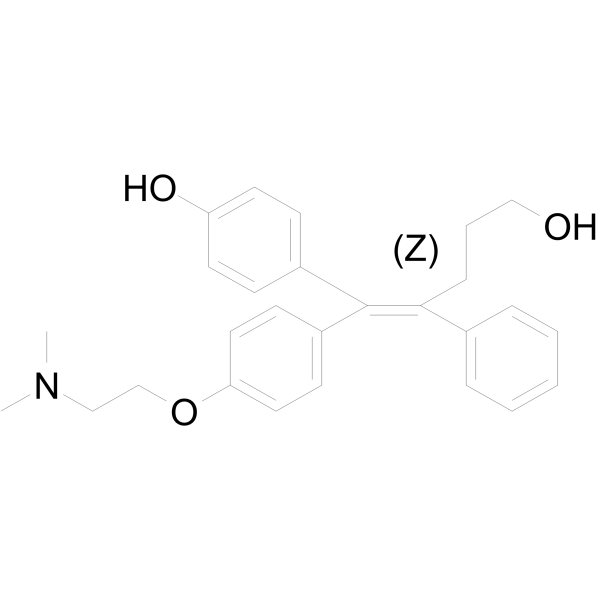
-
GC36201
GW7604
GW7604 is an antiestrogen. GW7604 is the metabolite of GW5638, which is a high affinity estrogen receptor (ER) antagonist.
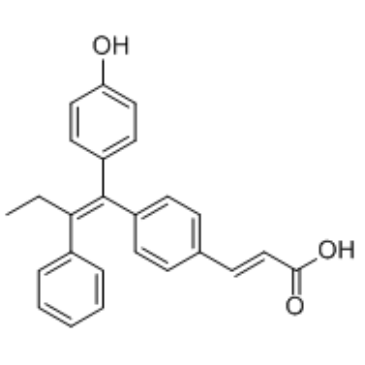
-
GN10566
Gypenoside XVII
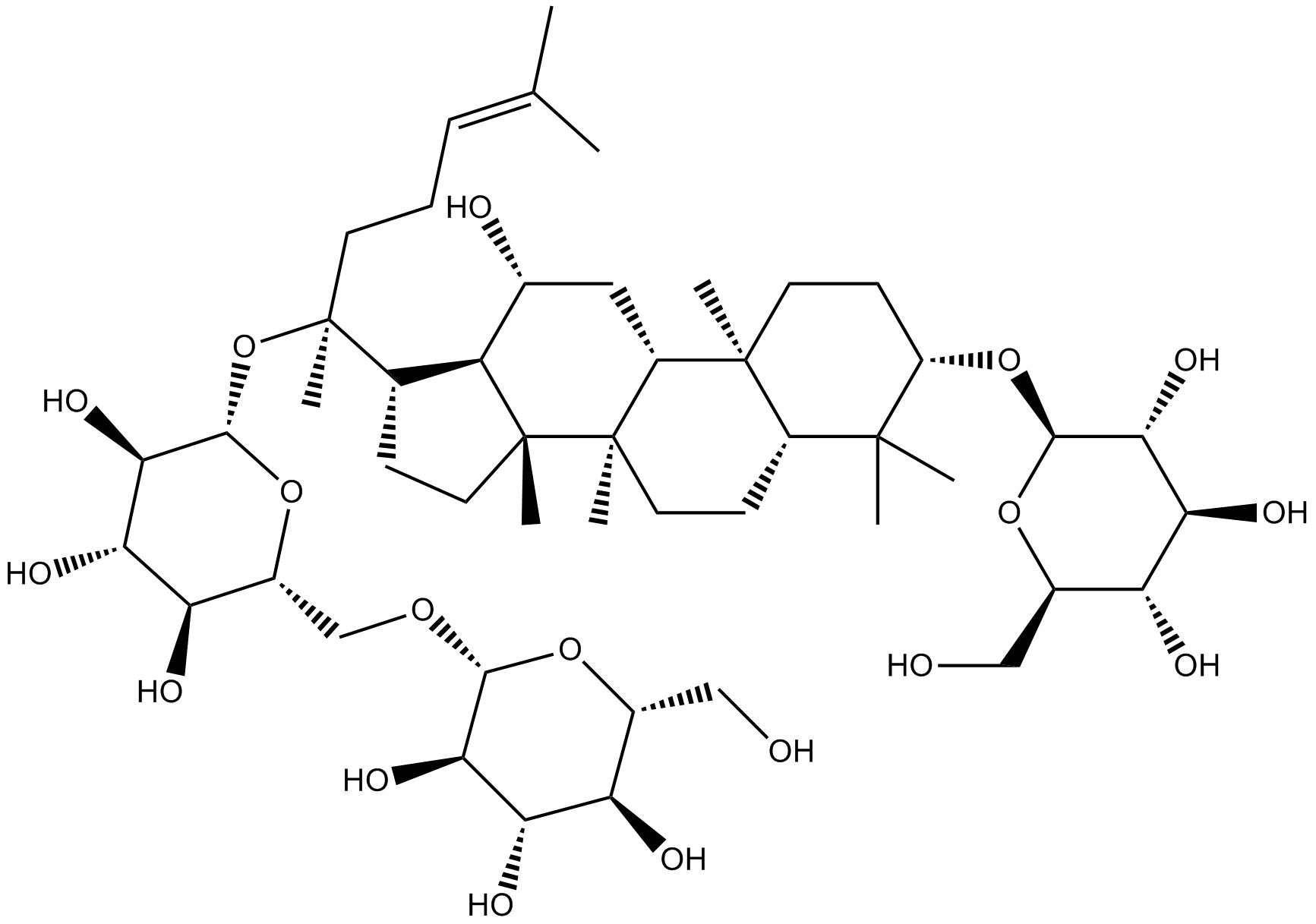
-
GC33262
H3B-5942
A selective estrogen receptor covalent antagonist

-
GC32406
H3B-6545
H3B-6545 is an oral, selective estrogen receptor covalent antagonist (SERCA) for the research of metastatic ER-positive, HER2-negative breast cancer.
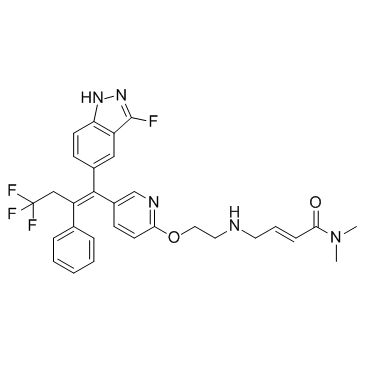
-
GC33378
H3B-6545 Hydrochloride
H3B-6545 hydrochloride is an oral, selective estrogen receptor covalent antagonist (SERCA) for the research of metastatic ER-positive, HER2-negative breast cancer.
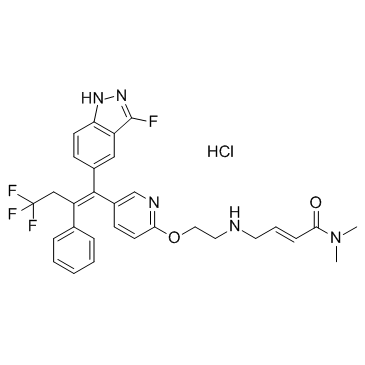
-
GC63899
hFSH-β-(33-53) (TFA)
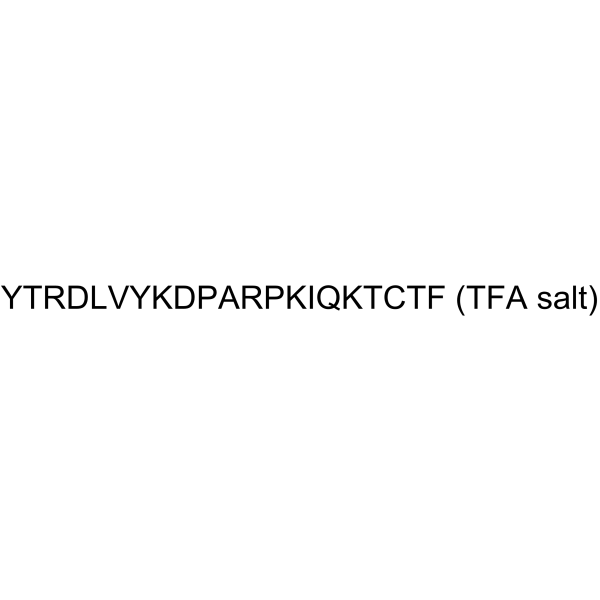
-
GC33402
Idoxifene (CB7432)
Idoxifene (CB7432) (CB7432) is a novel tissue-specific selective estrogen receptor modulator (SERM).
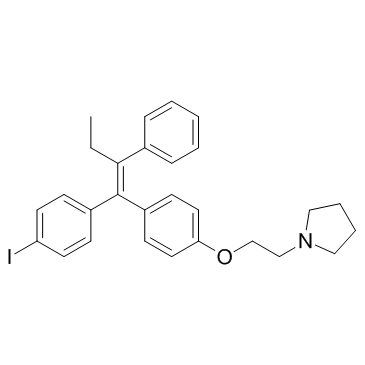
-
GC15730
Kaempferide
A flavonoid with diverse biological activities
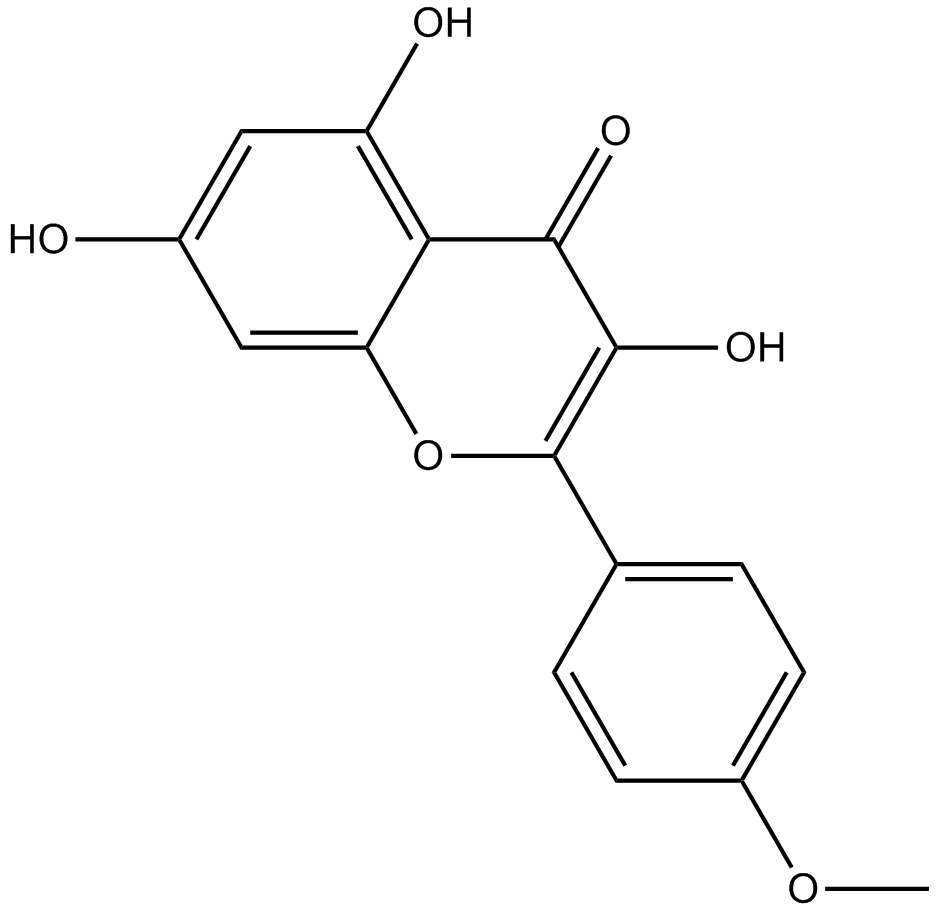
-
GC11425
Lasofoxifene (tartrate)
third-generation, non-steroidal selective estrogen receptor modulator (SERM)
